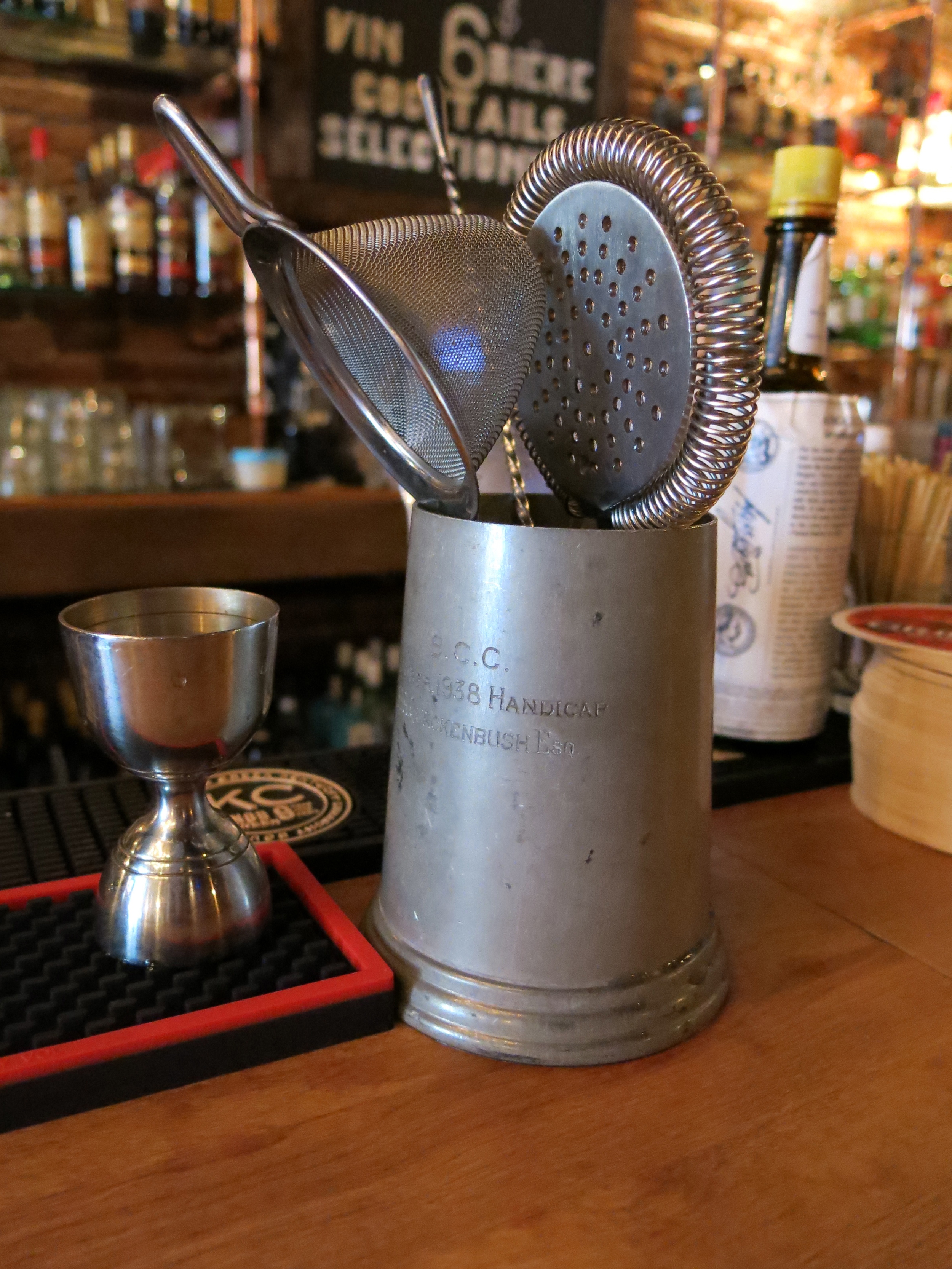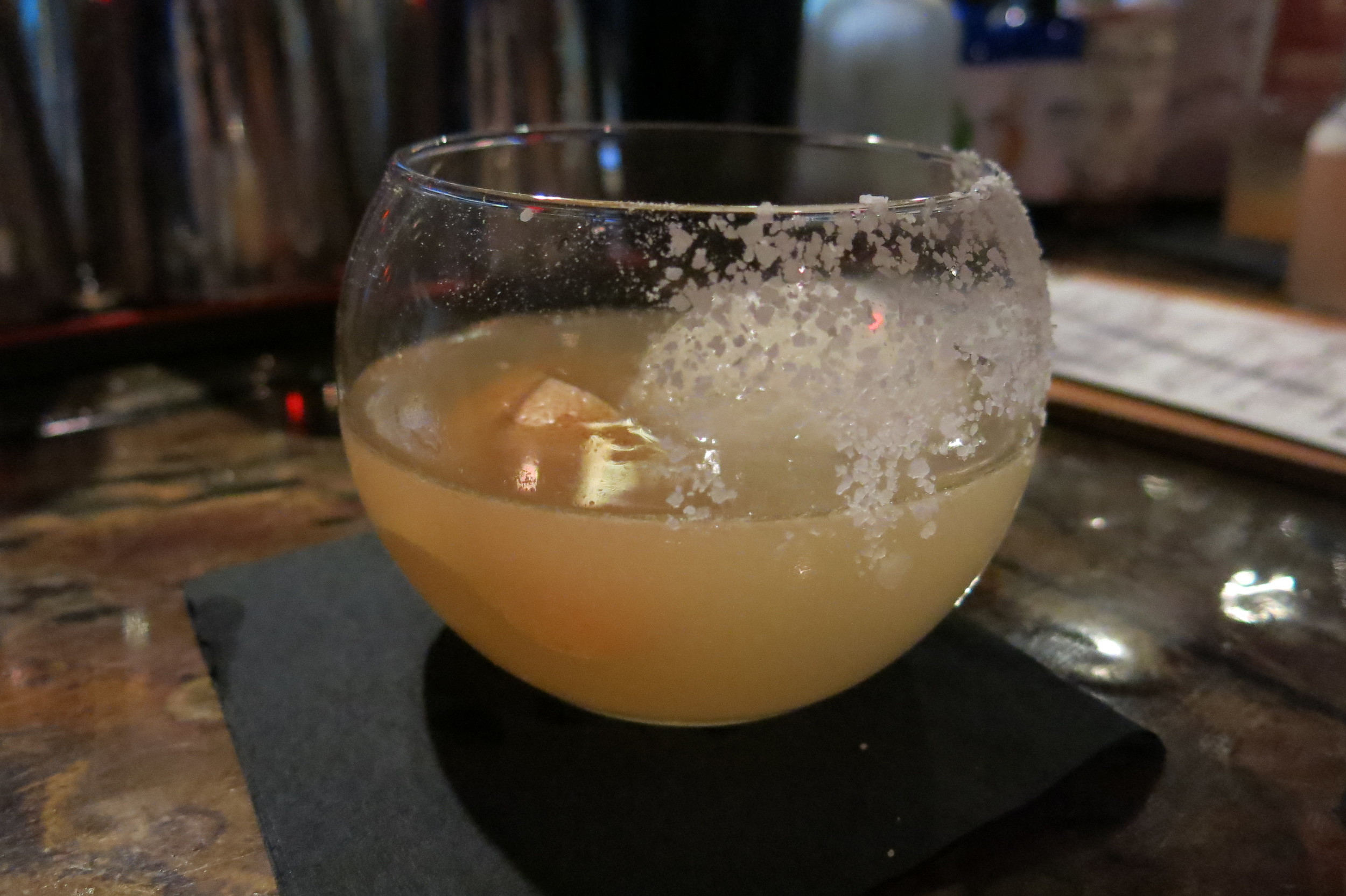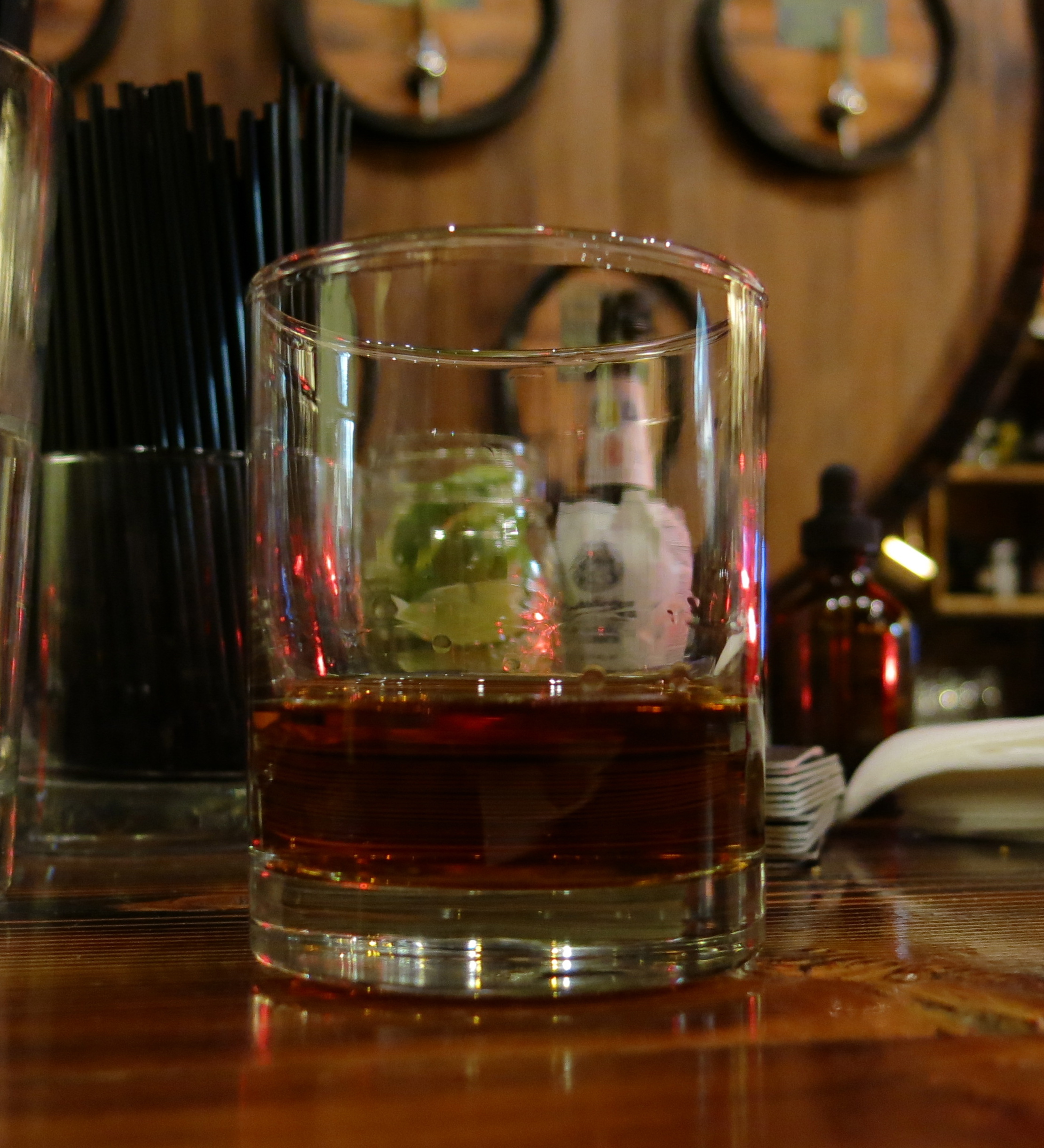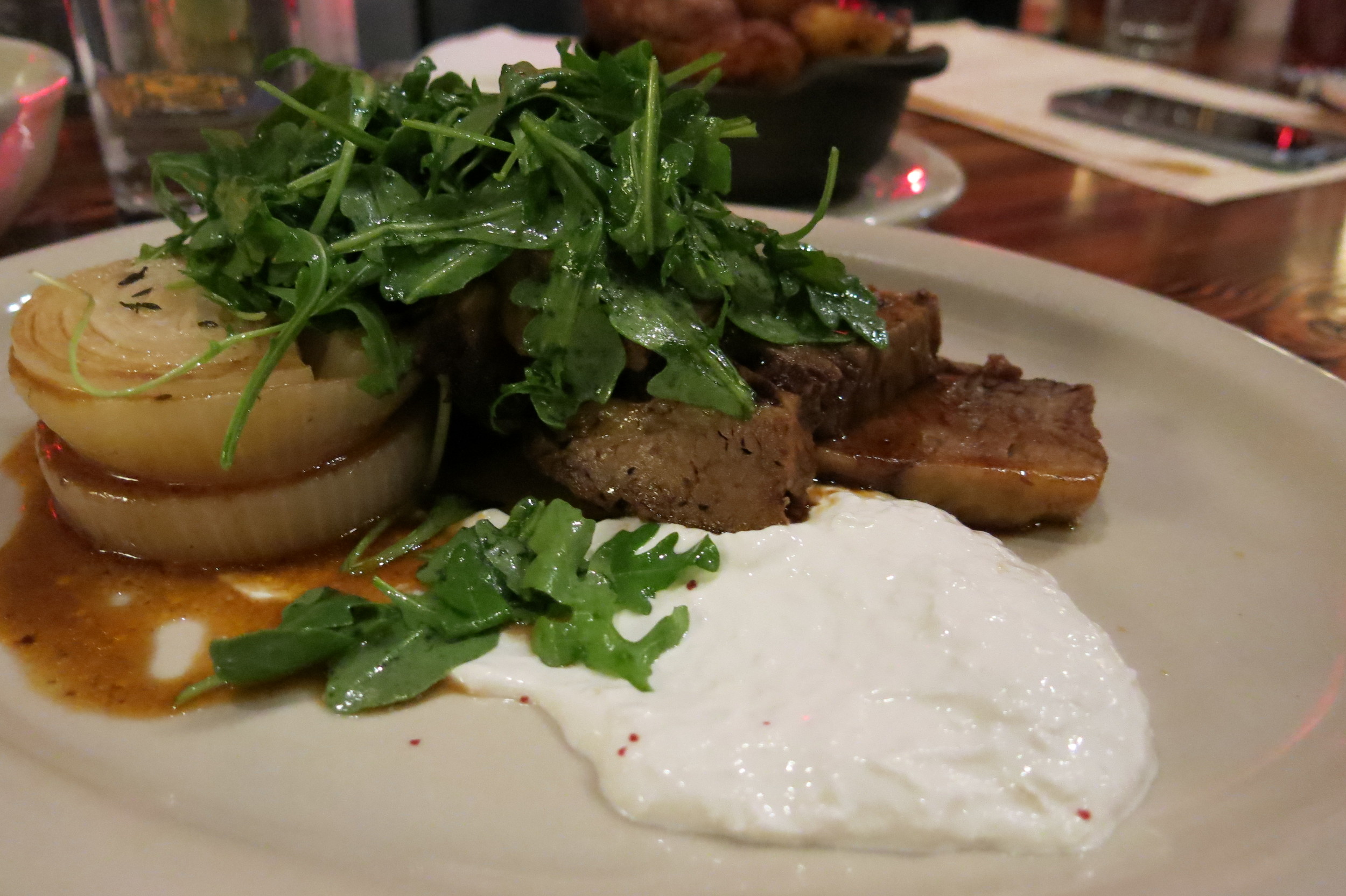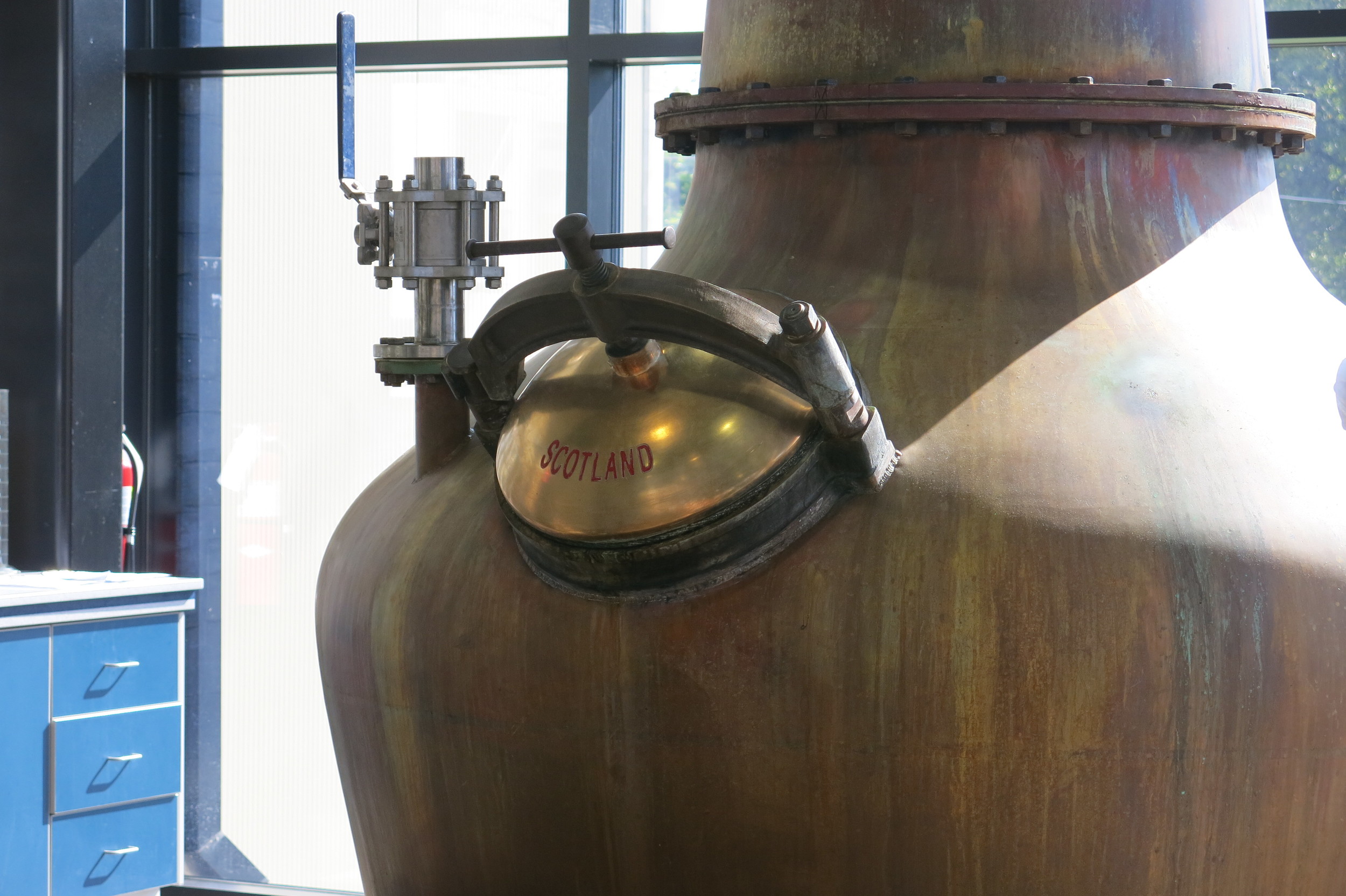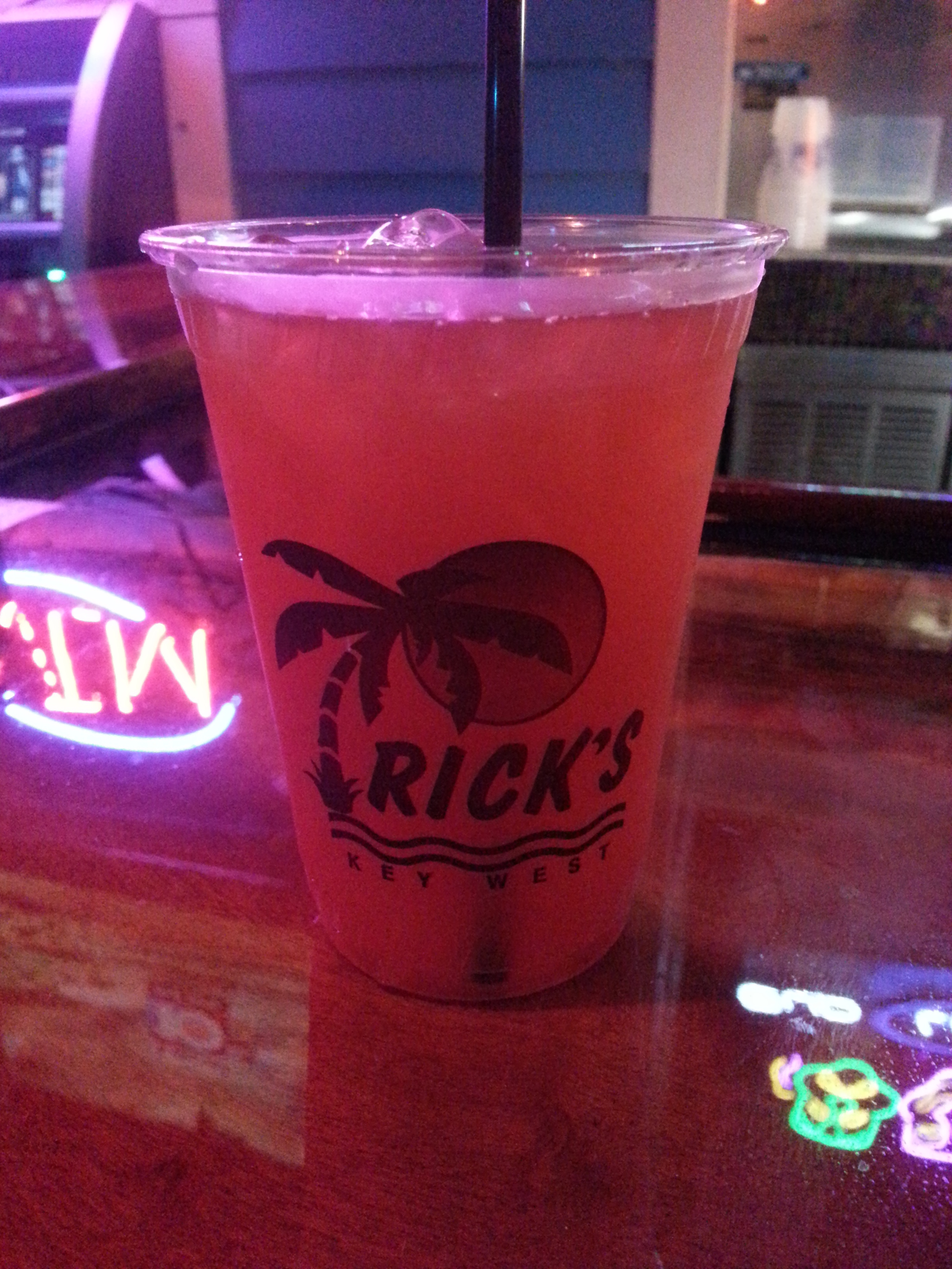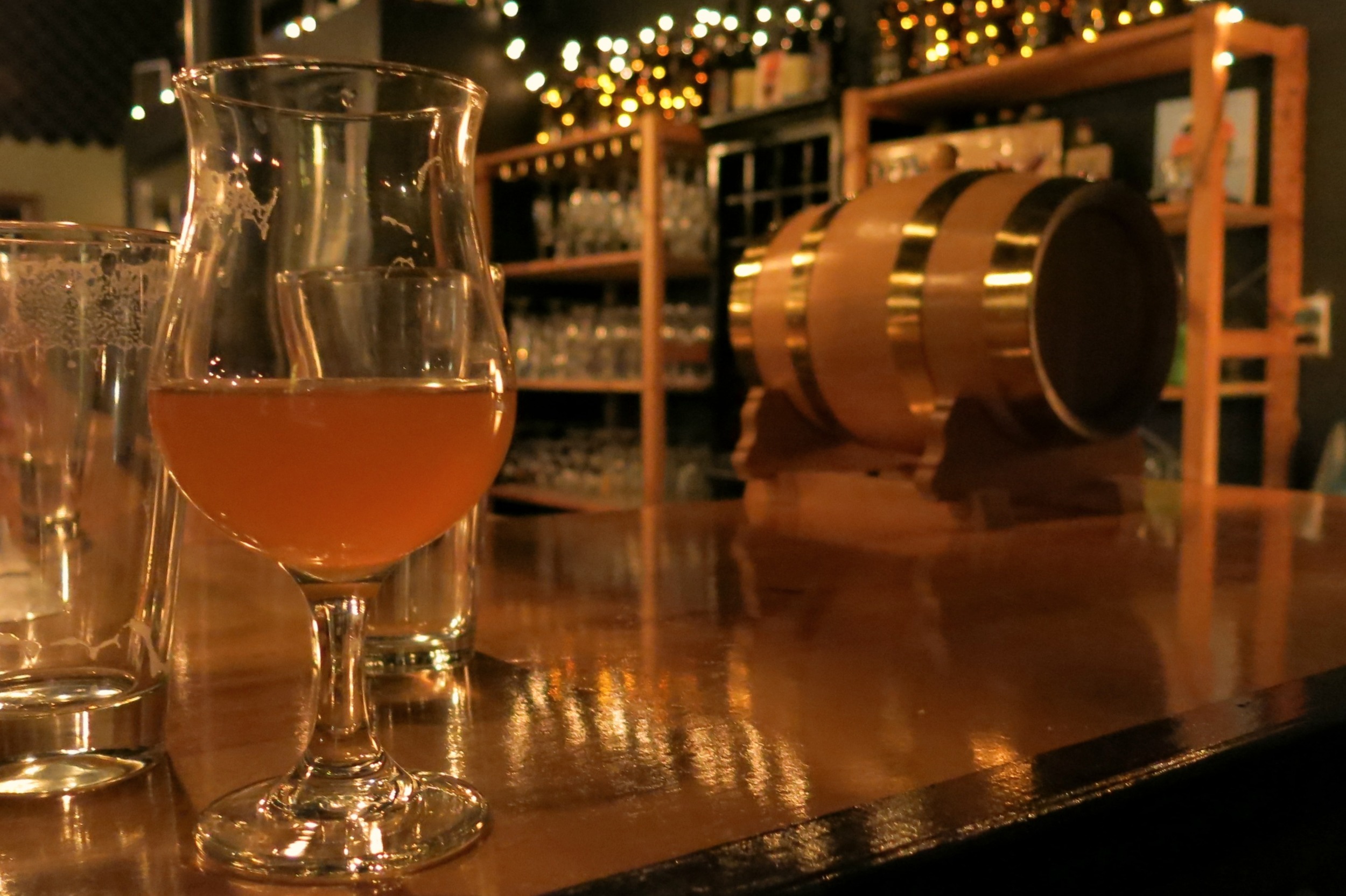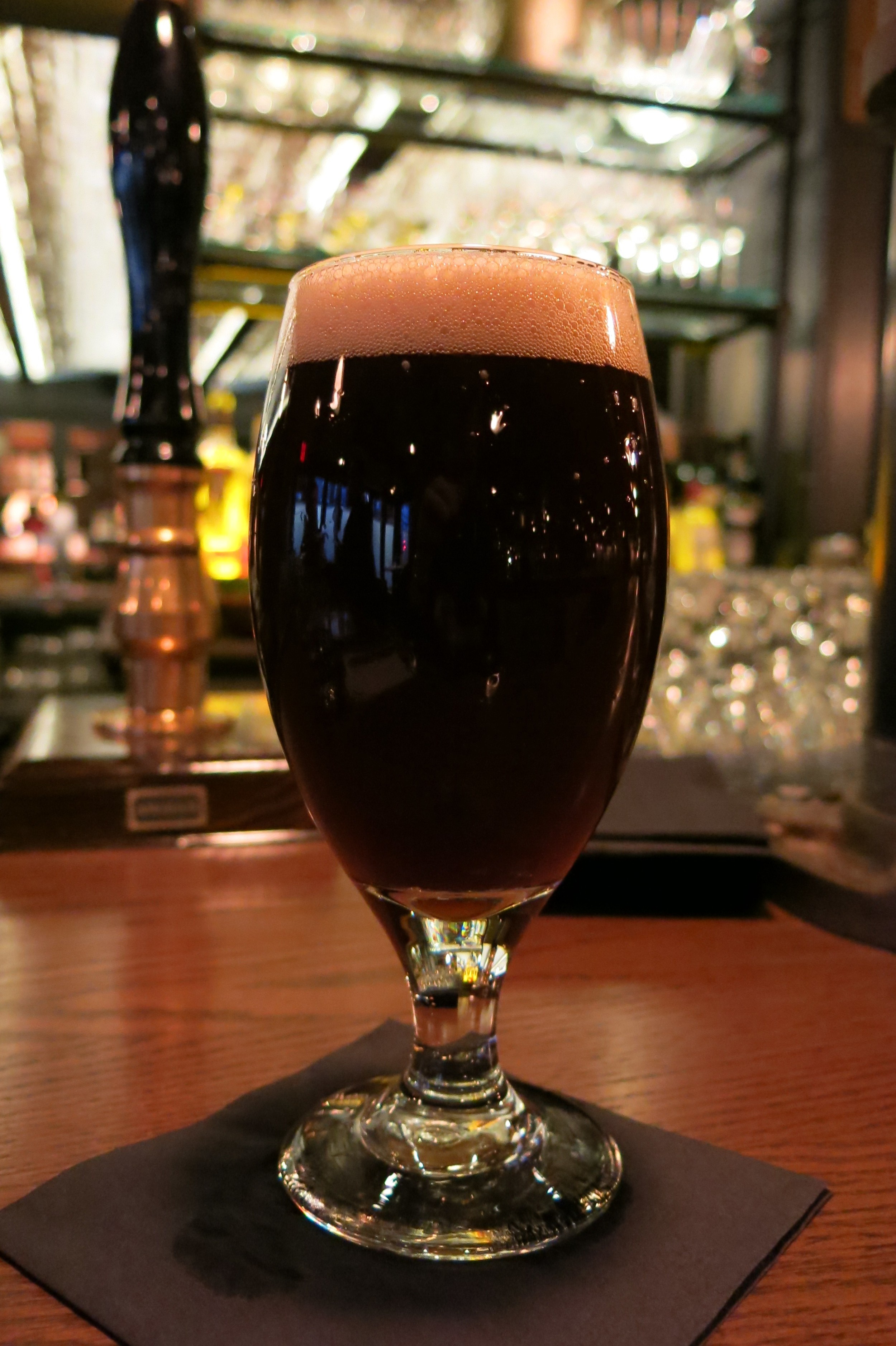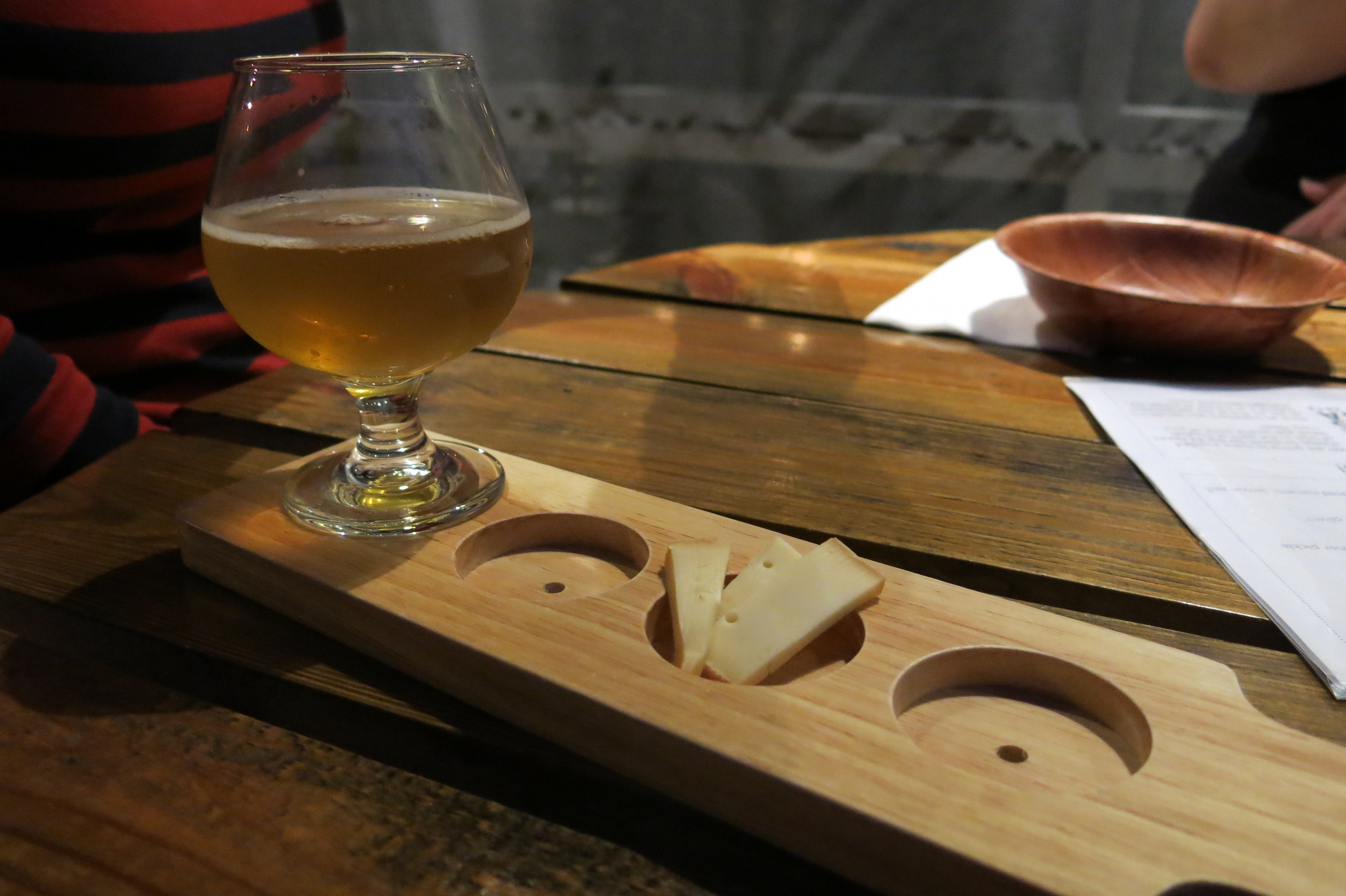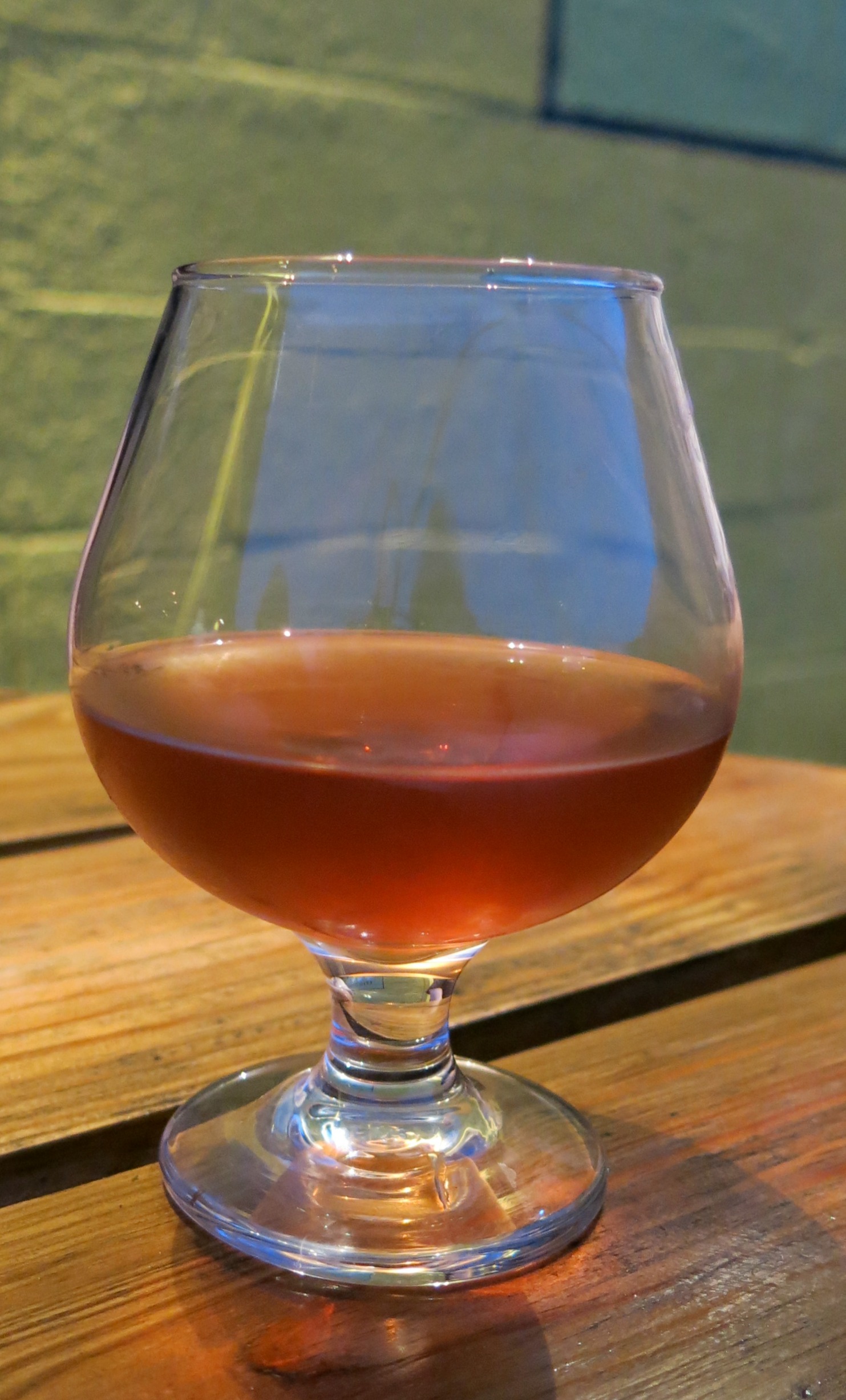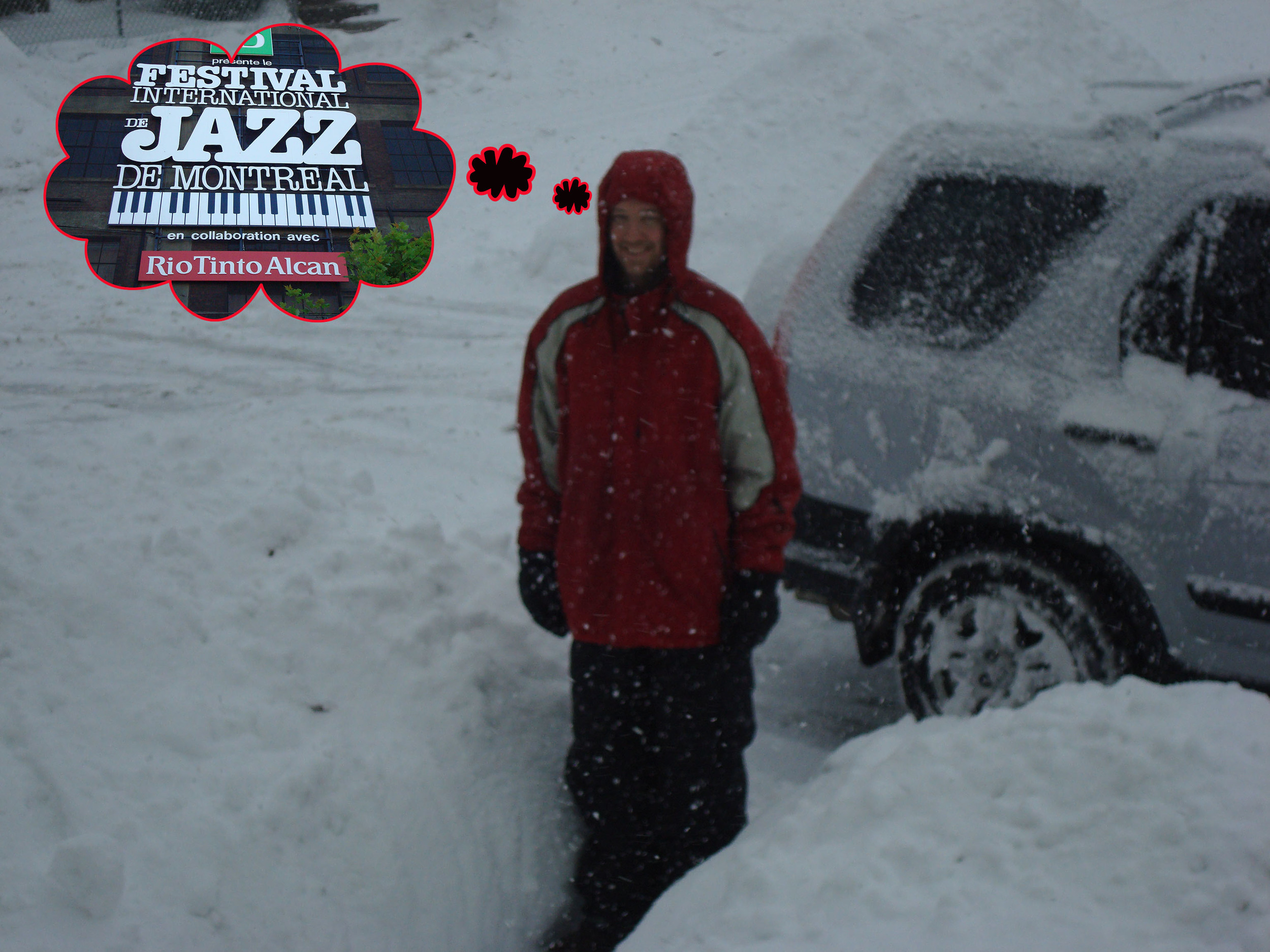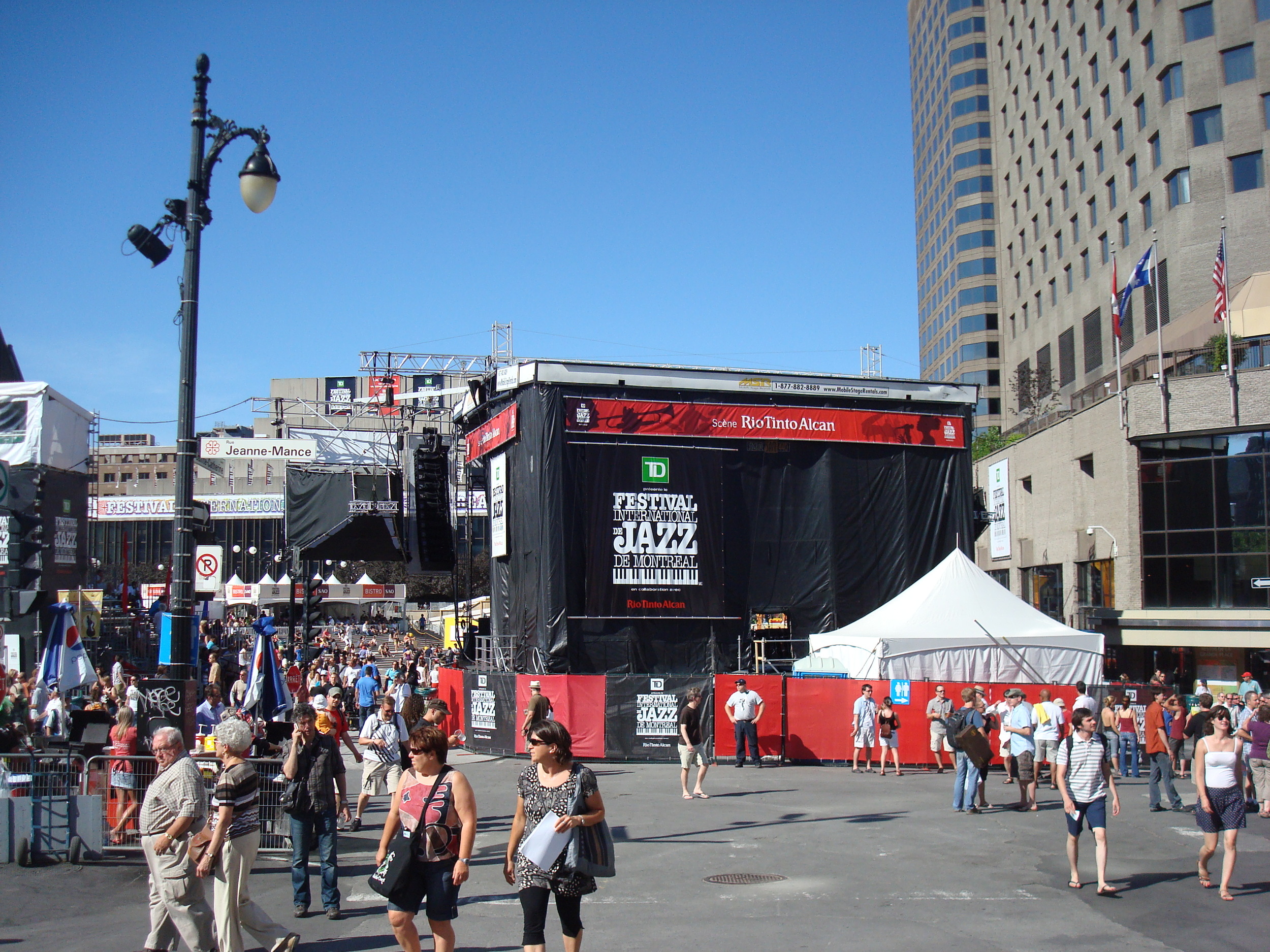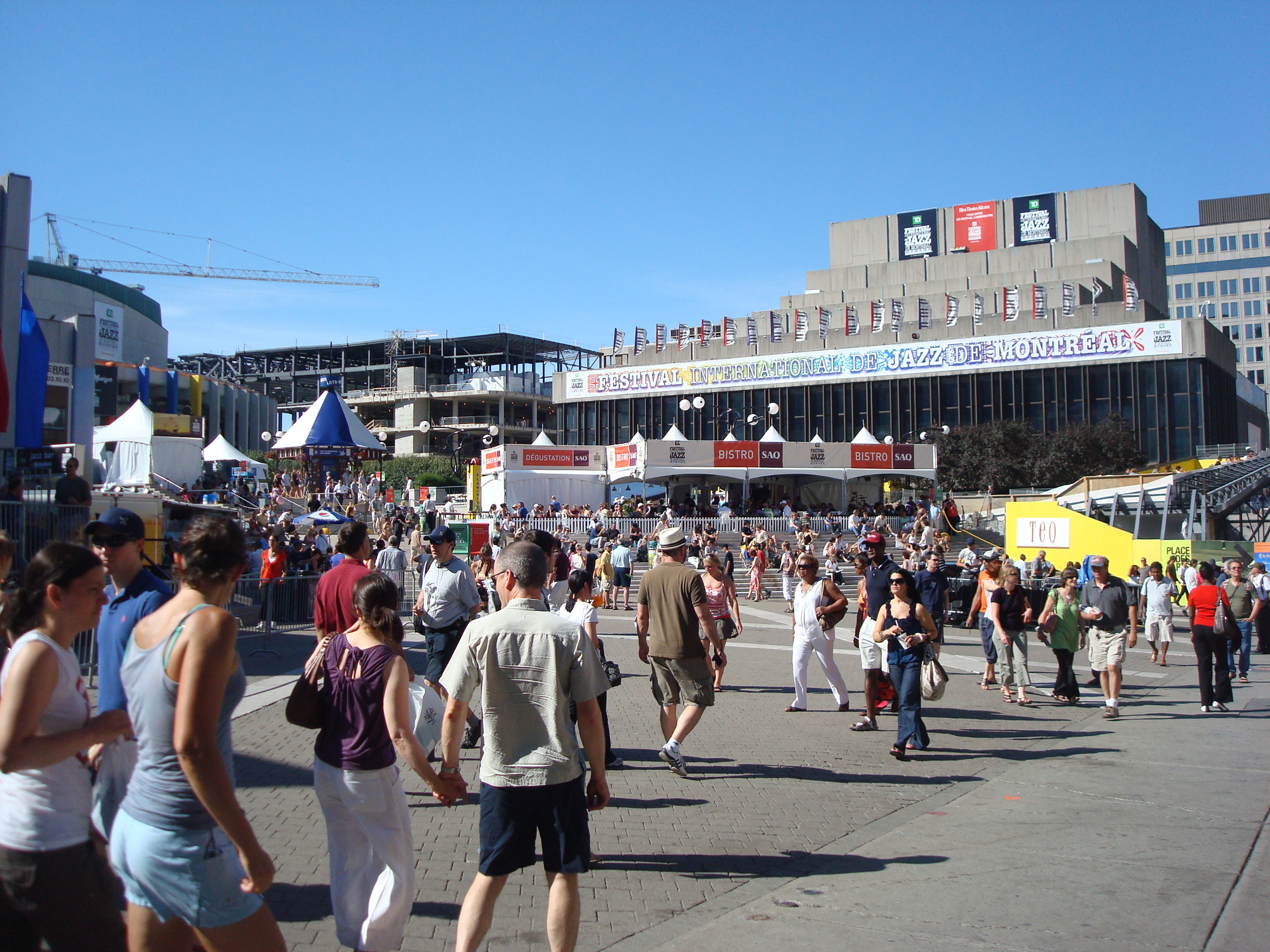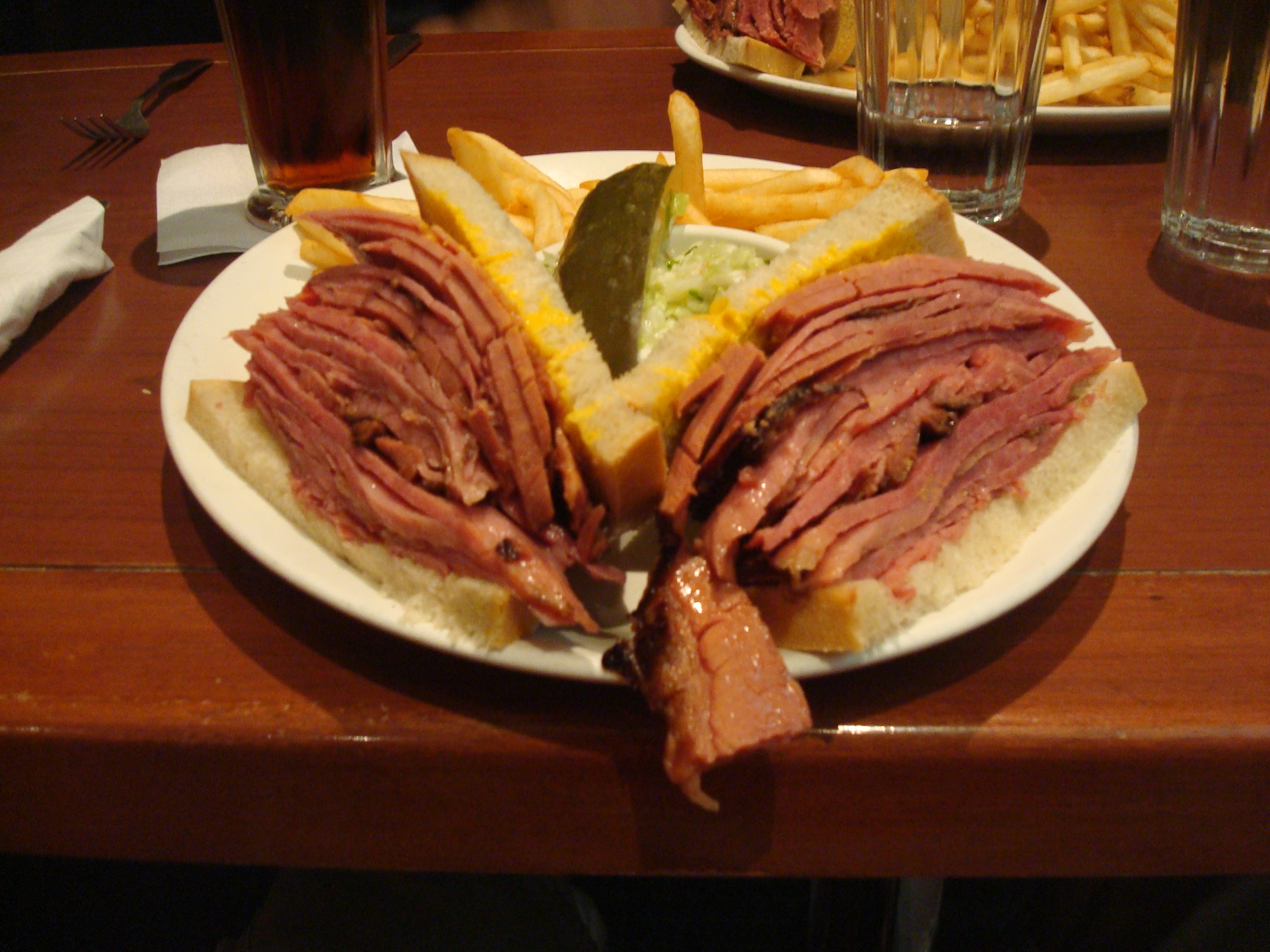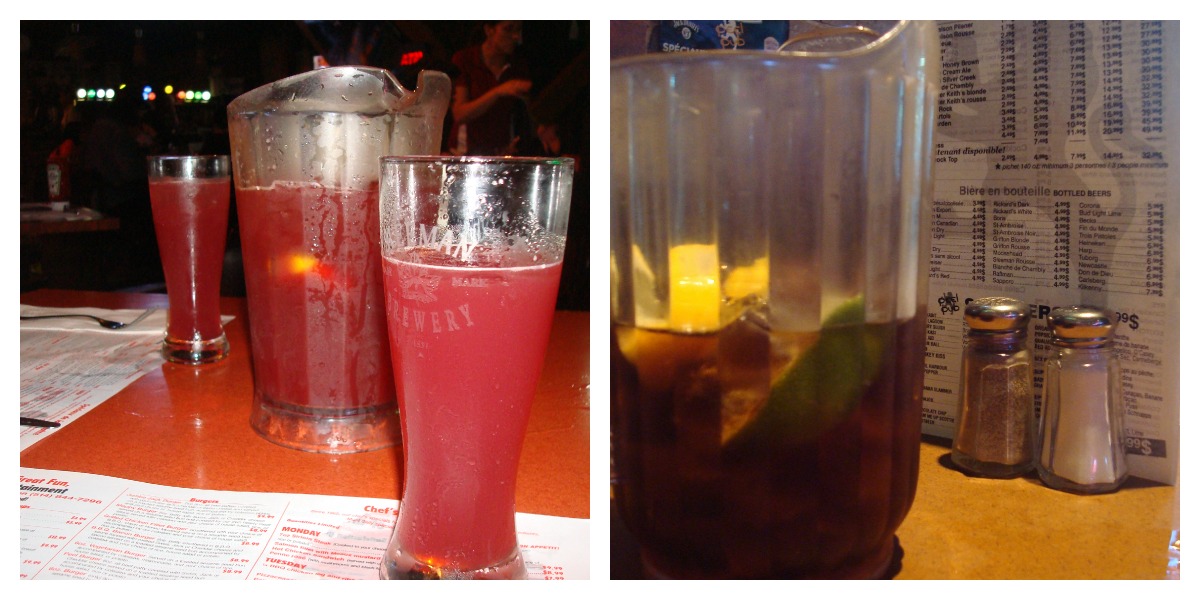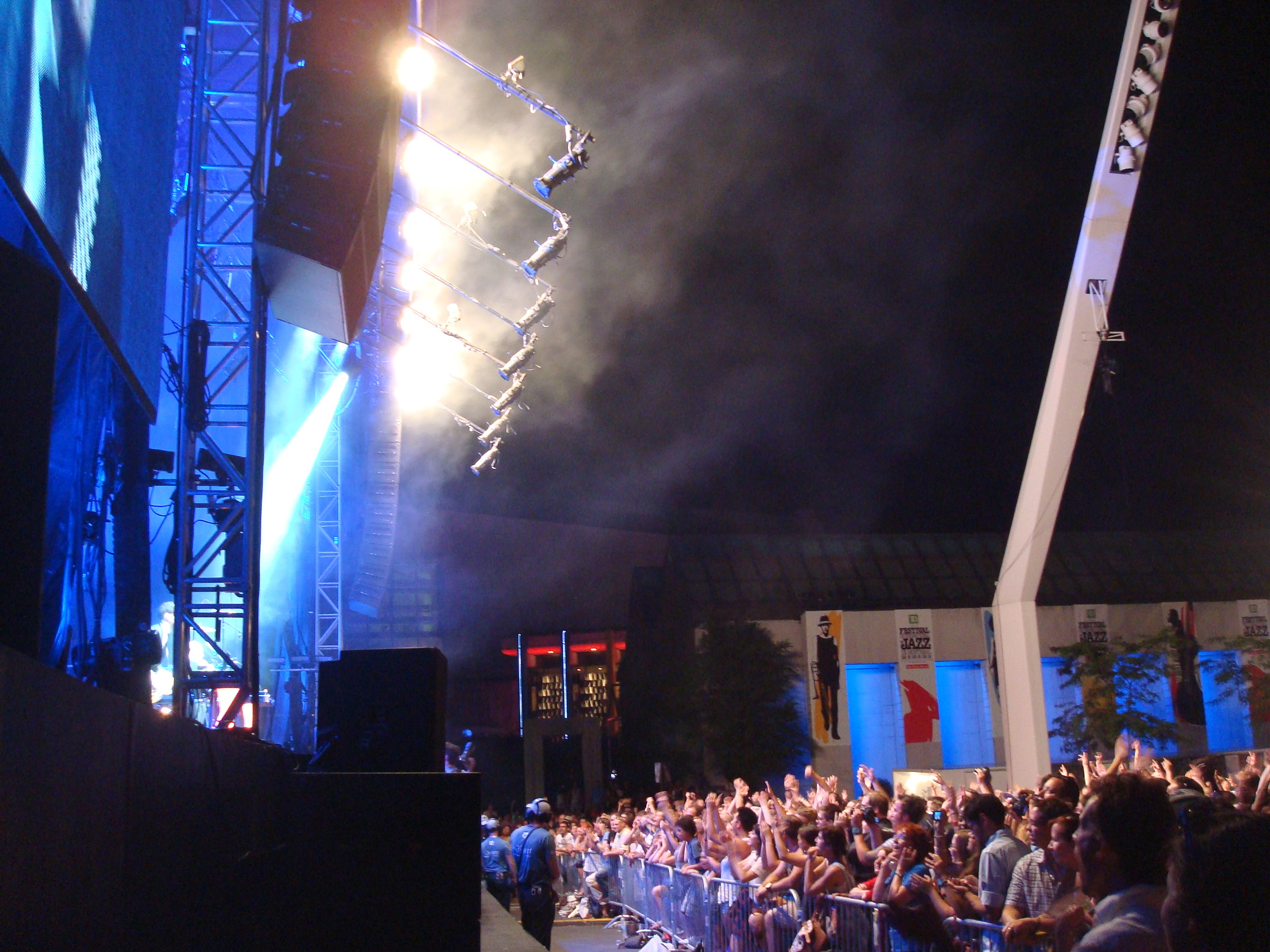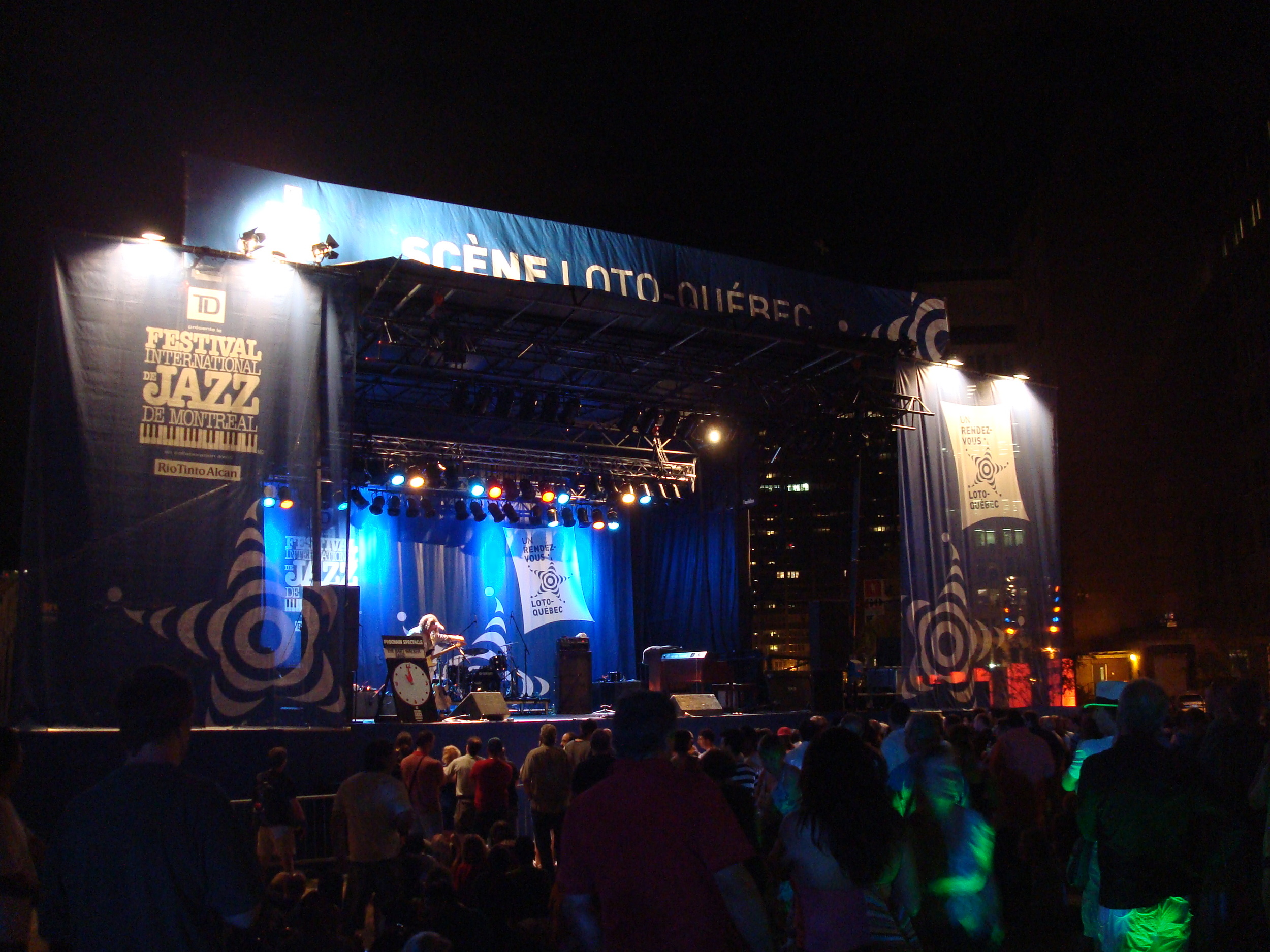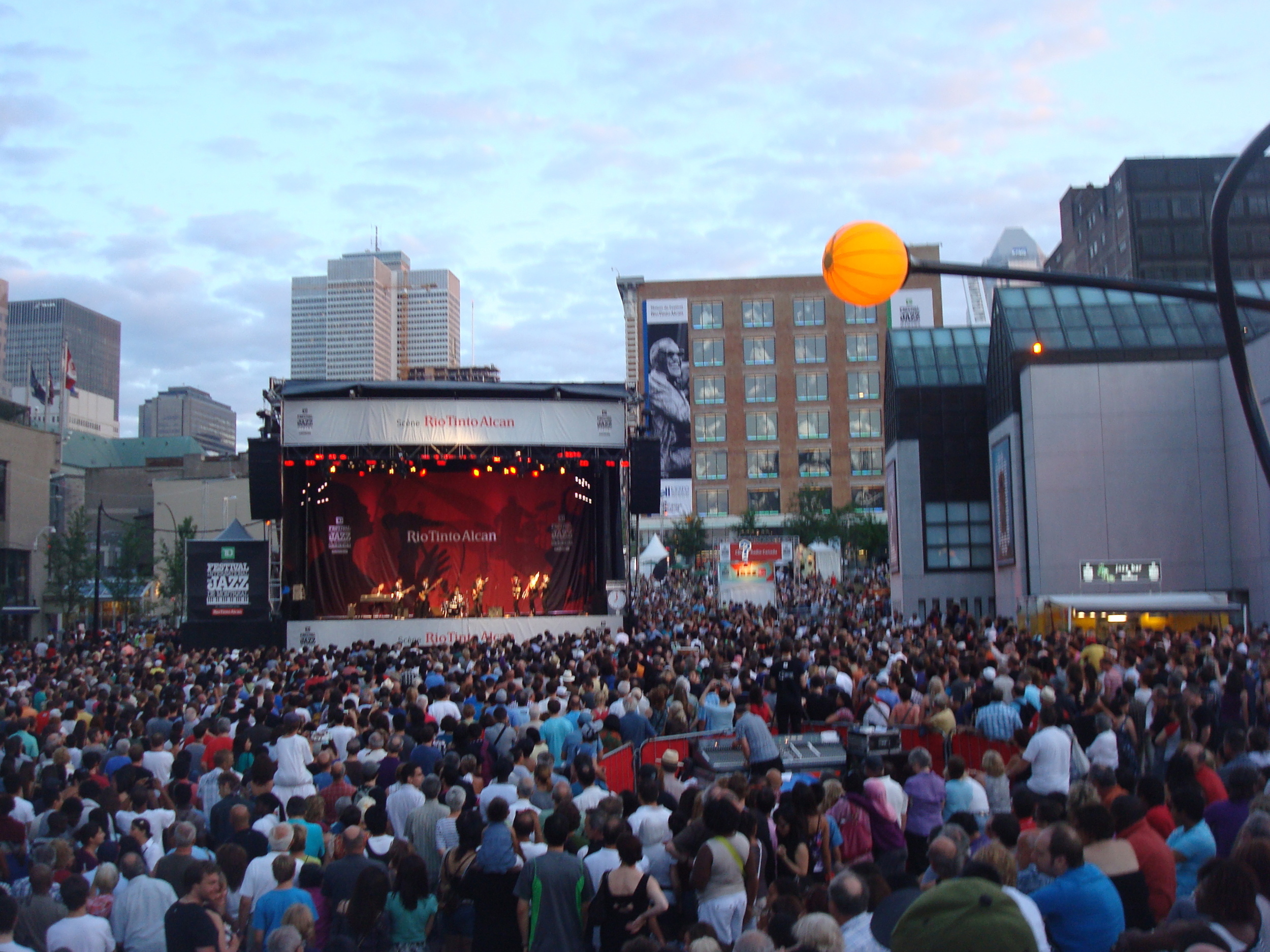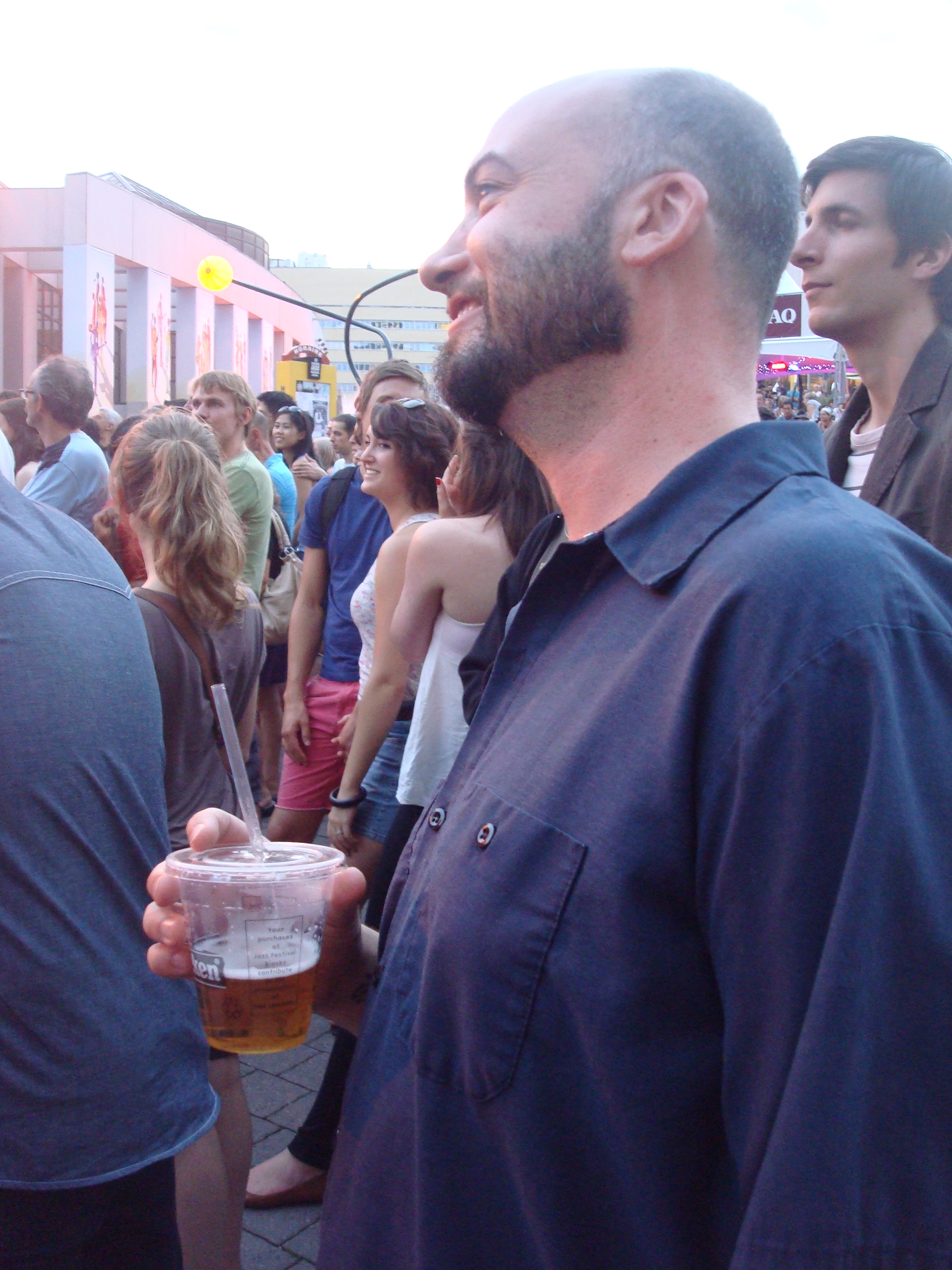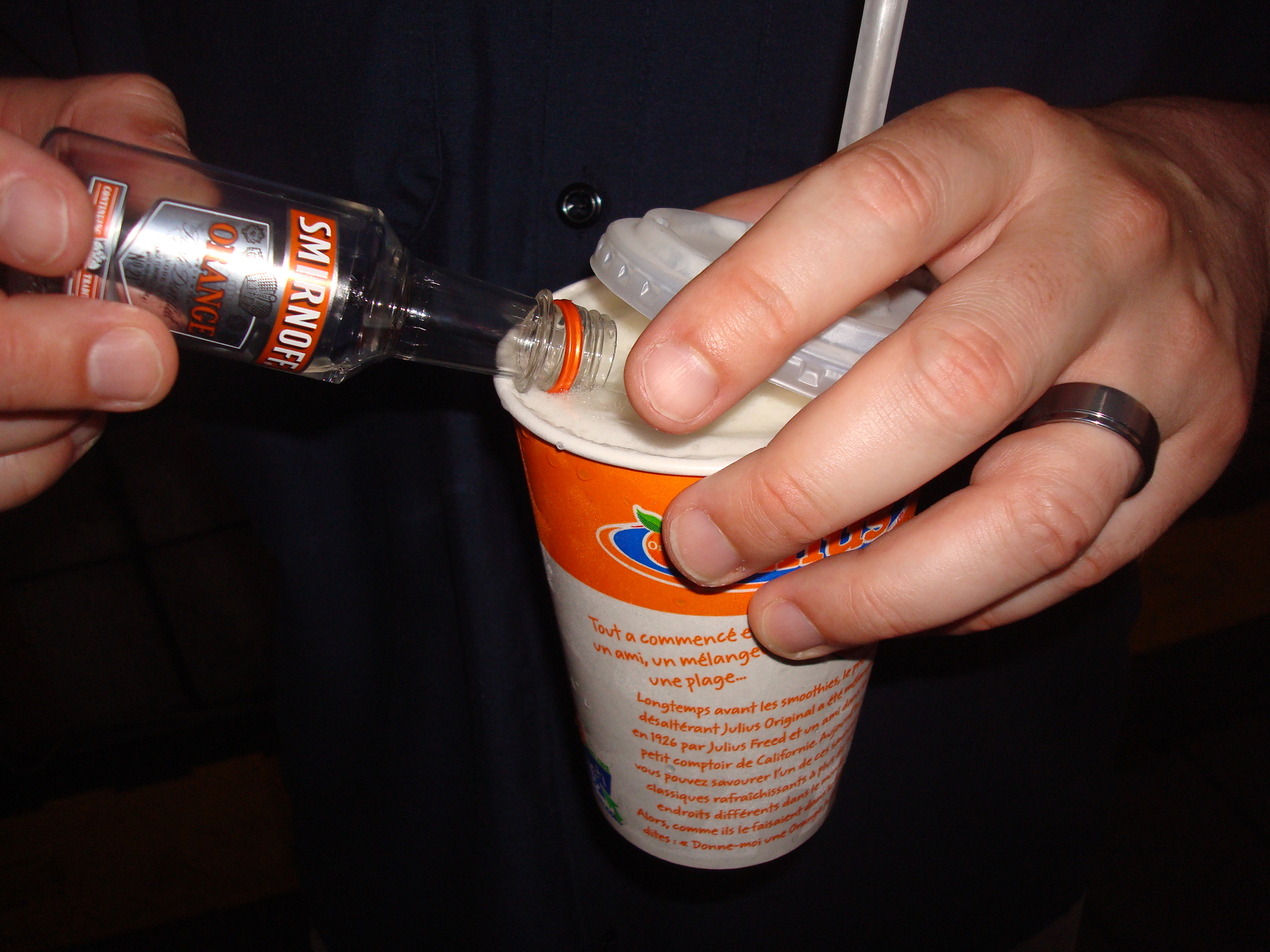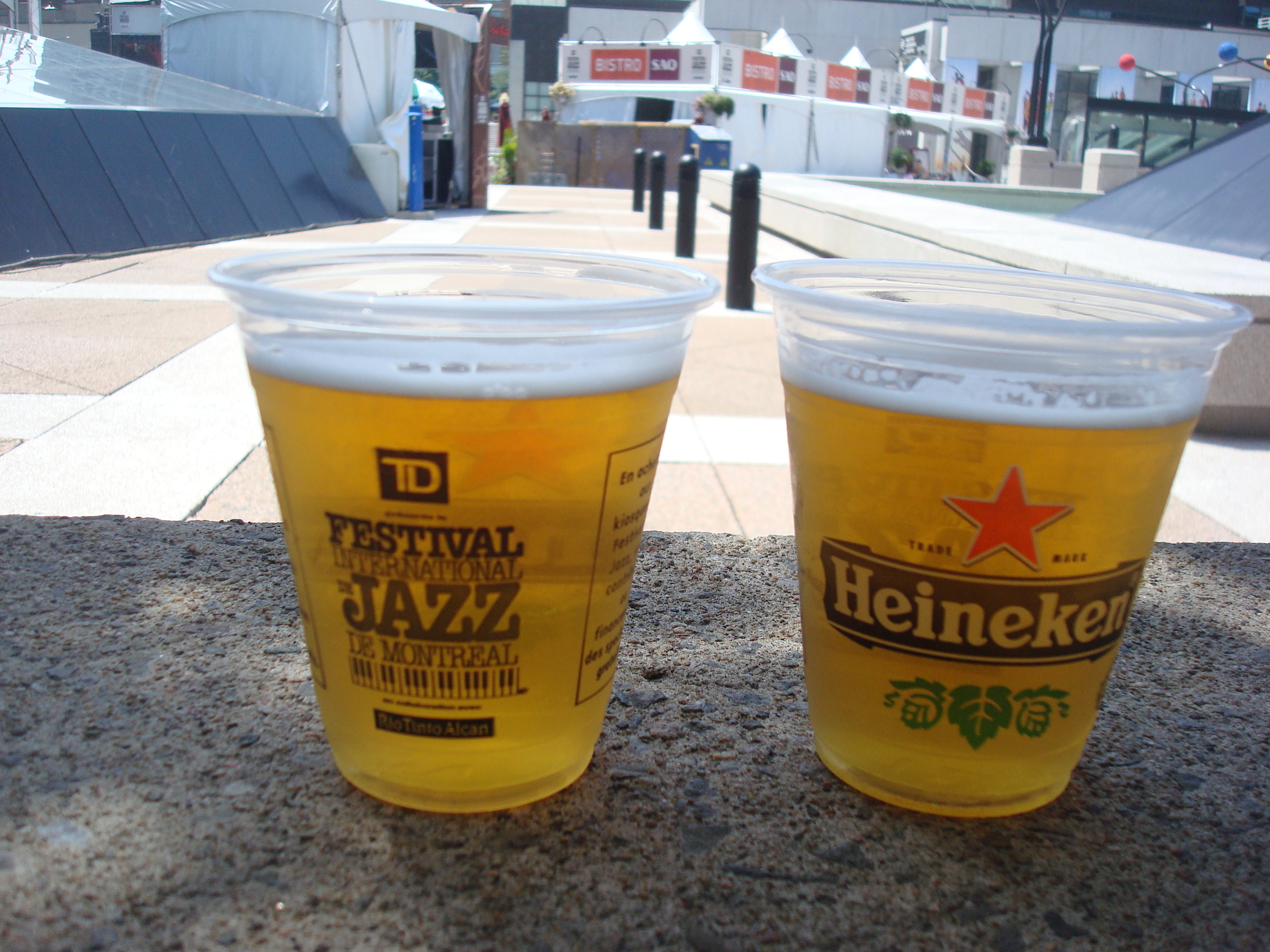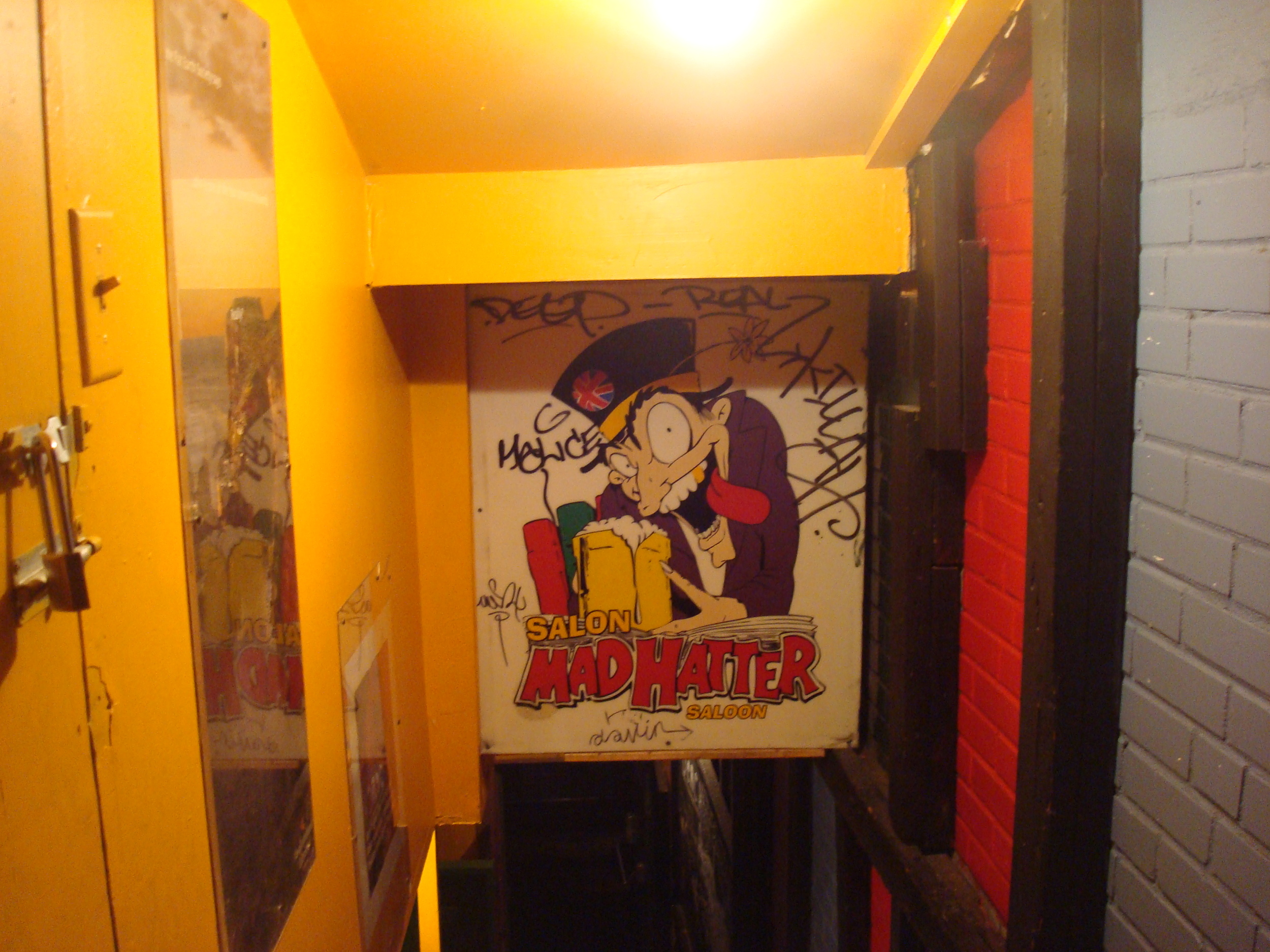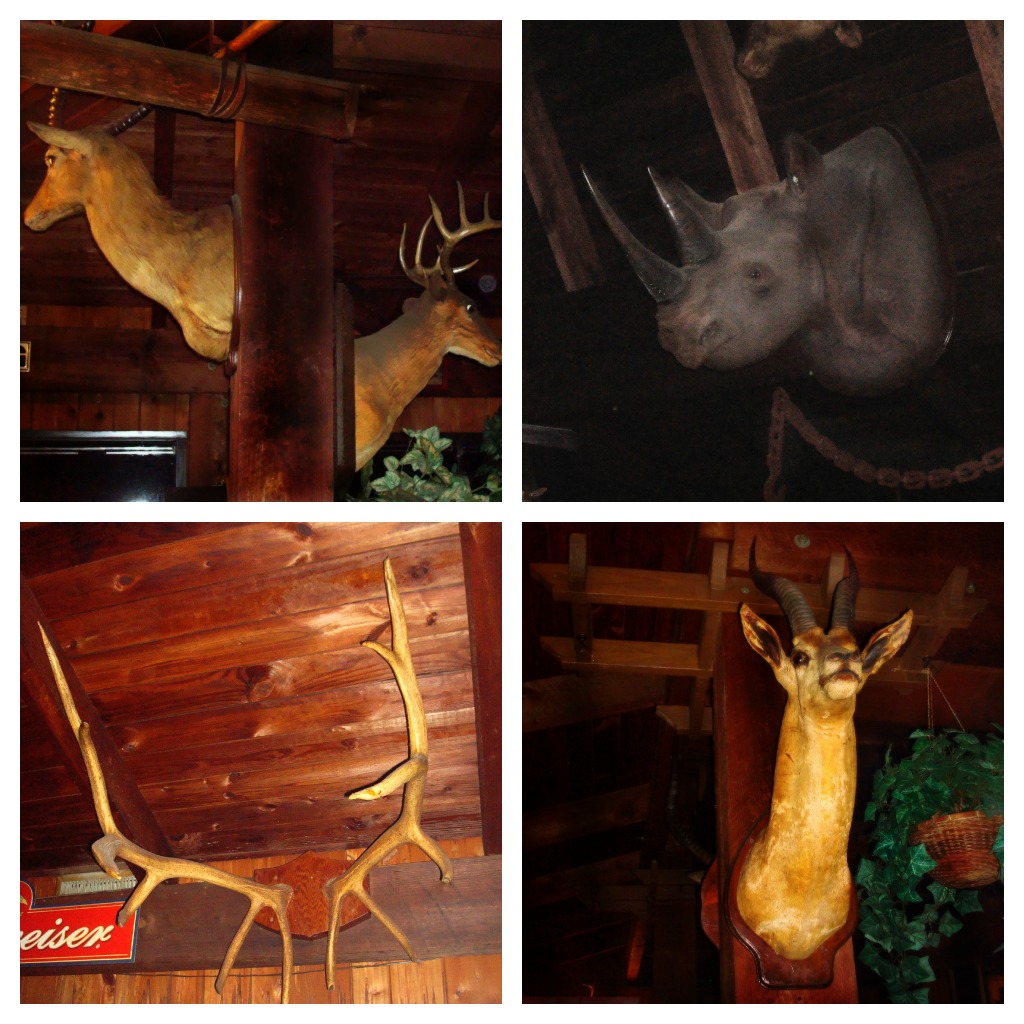One for the Road – Green Russell
I recently had the good fortune to travel to Colorado, my first-ever trip to the Centennial State. I spent some time in Estes Park, a resort-like town about 70 miles northwest of Denver that serves as the base camp for Rocky Mountain National Park. If you’ve never been, take it from me – the scenery there is absolutely breathtaking.
Wherever you are, and whichever way you turn, the majestic peaks of the Rockies are on your immediate horizon. And when you’re exploring the mountains themselves, either by car or on foot, the experience is truly fulfilling. My very soul felt somehow renewed by gazing at the stunning vistas and breathing that crisp Rocky Mountain air.
It would far exceed my writing or photography skills to faithfully convey the essence of that experience, so I’ll stick with what I’m reasonably good at. After a few days in Estes Park, I traveled to Denver. Now, Colorado is a beer state, widely known and renowned for its concentration of breweries. But its capital city also boasts a pretty impressive cocktail scene. A growing number of Denver bars have won national acclaim for their innovative approaches to mixology. One, Williams & Graham, was even named Best American Cocktail Bar at this year’s Tales of the Cocktail conference in New Orleans.
With so many choices and so little time, I relied on a friend’s advice and opted to check out Green Russell, a subterranean, speakeasy-style bar in the heart of historic Larimer Square. As with many modern speakeasies, finding Green Russell means knowing where to look. At first, the bar appears to be clearly marked, with a sign above a flight of stairs leading below ground level. You walk in, see a pretty conventional-looking bar to your right, and think, “Well that wasn’t so hard to find.” But not so fast! That’s the bar of Russell’s Smokehouse, a barbecue restaurant.
So, if you’re like me and aren’t familiar with the place, you’ll awkwardly amble over to the hostess and say, “Yeah, I’m looking for the bar? Uh, not that bar, but I guess there’s another, uh...bar…” at which point she’ll mercifully put an end to your blather and ask you for your name and the number of people in your party. After a few minutes (10 minutes in my case, since the bar hadn’t opened yet, which only added to the awkwardness; and I’ll tell you, nothing makes you feel more like an alcoholic than standing outside a bar by yourself, waiting for it to open), someone leads you beyond a pair of service doors that give you the impression of sneaking into the kitchen of a bakery. Past the doors is no bakery, though, but a dark room that looks like a partially finished basement with a fancy bar set up in it. In other words, like a speakeasy.
But unlike so many bars that try to capture the look and feel of a 20s-era illicit watering hole, Green Russell’s speakeasy character has genuine historical roots – the space actually did serve as a speakeasy during Prohibition. It certainly looks the part, with its rough-hewn stone walls, wooden posts, dim lighting, and vintage fixtures.
But as the bartender explained to me, Green Russell calls itself a pre-Prohibition bar, focusing on classic drinks and techniques that were in vogue before the so-called Noble Experiment. Think fresh, house-made ingredients and hand-chipped ice.
Further, the emphasis here is less on secrecy and more about fostering a comfortable drinking experience, with the cocktail appropriately at the center. The small space can be busy, but not jam-packed – you’re admitted to the bar only when your whole party can be seated. Enjoy talking on your phone while you’re at a bar? There’s a phone booth for that. And if you truly don’t know how to comport yourself in a modern cocktail lounge, there’s a sign at the door offering a few helpful suggestions.
Overall, Green Russell is built around the experience of enjoying a well-crafted cocktail, and my own experience was outstanding. Maybe it’s because I was there early on a weeknight, or because I was alone, but I got such individualized attention that my bartender, Heather, seemed more like a guide – offering suggestions, answering questions, and making conversation.
At the heart of this “chef-driven cocktail joint” is a dynamic, highly contemporary beverage program that features a dozen seasonal offerings, several barrel-aged cocktails, and a “bartender’s choice” option, if you’re willing to put your faith in your bartender. (Note: The drinks in this story were part of Green Russell’s summer menu; I assume the fall offerings are what you’ll find now.)
At Heather’s suggestion, I began with the Castle Black, inspired by the ancient, beleaguered center of defense against supernatural predators in the Game of Thrones series. This vibrant drink combined two brands of 10-year-old scotch – Glen Grant and Laphroaig – along with Amaro Lucano, black pepper, and citrus bitters. The pepper served to intensify the smokiness of the scotch, and despite the gloomy name, the citrus gave the drink an overall sense of brightness.
Normally at this point I’d explore the menu a little further, but since Heather’s first recommendation was so good, I opted for the bartender’s choice. I expressed a preference for bourbon, and she responded with a creative variation on a Manhattan. Combining Evan Williams Single Barrel bourbon, Amaro CioCiaro, maraschino liqueur, and angostura bitters, the drink had a bold, deep sweetness with distinct orange notes from the amaro. The maraschino liqueur added a little dryness and bitterness.
Since I’m a sucker for good gin and bad puns, my next choice was the Mousse with the Fir, a mix of St. George’s excellent Terroir gin, Pampelmousse grapefruit liqueur, black pepper, lemon, and mint. This sour, invigorating cocktail had a complex but well-balanced blend of herbs and botanicals, with just a hint of sweetness. (I appreciated the clever name but was unhappily stuck with that “boots with the fur” song in my head for the remainder of the weekend.)
Green Russell’s food program largely comprises bar snacks that are equal parts inventive, upscale, and playful, such as candied spiced nuts, brisket sliders, and pigs in a blanket. The emphasis is on shareable dishes, but most are substantial enough to serve as full serving. I went with the delicious charred octopus, served with hush puppies, smoked aioli, and a spicy chorizo salsa verde.
For my final drink of the evening, I again deferred to Heather’s judgment. Deciding that I needed a rum drink to complete the equation, Heather consulted some of her personal notes before whipping up a doozy. Made with Appleton dark rum, silver rum, maraschino liqueur, and Cocchi Americano vermouth, this potent cocktail balanced strong sweet and herbal notes, ending with a surprisingly smooth finish that lingered on the palate. It was a thoughtful combination of ingredients and a satisfying (if boozy) conclusion to the evening.
It’s easy to get carried away with the speakeasy theme, and some bars allow novelty to trump substance. The ones that get it right, like Green Russell, use the motif as a means to elevate the cocktail experience. The focus here is on creative drinks and a talented, attentive bar staff – not passwords and gimmickry. And if that means standing outside those nondescript kitchen doors for a little while, chances are your patience will be rewarded.
Address: 1422 Larimer Street, Denver, Colorado
Website:http://www.greenrussell.com/
* * * * * * * * * * * * *
Copyright © Boston BarHopper. All Rights Reserved.
One for the Road – Taverne Midway
As anyone who lives or works in an older city can attest, gentrification can be something of a mixed blessing. There’s no denying the benefits that accompany the revitalization of a neighborhood gone to seed, so to speak. The convenience and glow of new infrastructure, the excitement of modern businesses opening their doors, and the influx of new residents with cash to burn all contribute to the restarting of an economic engine, making a once-avoided neighborhood a destination for locals and tourists alike. Then again, if you already call that neighborhood home, a reboot might mean heartache. Gentrification inevitably displaces longtime residents and small businesses, either because they’re physically in the way of new construction or can’t keep up with rising rents. The process often disrupts traditionally ethnic enclaves and alters the character of a given neighborhood. It’s a difficult, painful balance to strike – how do you clean up a region of a city without scrubbing out its culture?
Montreal is no stranger to this issue. Over the past 10 years or so, the downtown area now known as the Quartier des Spectacles has emerged as the epicenter of the city’s annual summer festivals and year-round performances.
Stretching nearly one square kilometer, this central location has been transformed by public real estate and construction projects into a polished, pedestrian-friendly hub that’s inviting, spacious, and comfortable. As an annual attendee of the Montreal Jazz Festival, I can’t exactly criticize the results.
But the ongoing initiative has encountered its share of resistance – particularly from the remnants of Montreal’s red light district. Once populated by a slew of shabby bars, strip clubs, and prostitutes, the portion of Boulevard Saint-Laurent that overlaps with the Quartier des Spectacles has long been home to an element that isn’t exactly consistent with the sparkling vision promoted by city planners.
But that’s just the problem – you can’t expect corporate real estate executives to distinguish between a decrepit tavern and a humble but cherished local landmark. Like the venerable Montreal Pool Room. Established in 1912, this divey restaurant hasn’t actually had pool tables for years but is beloved for its steamed hot dogs and poutine. The business butted heads with developers before agreeing to move across the street in 2010.
Café Cleopatra, meanwhile, remains in the same spot it’s stood since 1976, despite many spirited attempts to close it down. At first glance, this dated, seedy looking strip club might not seem worthy of preservation.
But it isn’t your typical den of iniquity – while Cleopatra’s ground-level floor is occupied by a traditional strip club, the upstairs is home to drag queen and transsexual shows. None of this is my particular cup of tea and may not be yours either, but a business that welcomes such a disparity of clienteles is unheard of. Western culture is only at the dawn of widespread transgender acceptance, and yet this club has coexisted above a bastion of male heterosexuality for decades. Whether that should bestow upon Cafe Cleopatra any special privilege as the neighborhood evolves is not for me to say. But it’s a reminder that a building is more than its façade, and that an institution deemed out of place by an ambitious urban planner might be a sanctuary for people who don’t feel welcome elsewhere.
Situated across the street from Cleo’s and adjacent to the Montreal Pool Room, Taverne Midway has a long, colorful history of its own. It’s resided on Boulevard Saint-Laurent since 1927, though its sharp, modern exterior belies its age. The bar presumably had its heyday, but for much of its long existence, Midway blended right in with the other nondescript, faded storefronts nearby. It was a dive you might walk right past, if you happened to be walking in that area at all.
“It wasn’t exactly a cocktail bar,” one of the bartenders tells me, diplomatically. Well, it is now.
Under new ownership, last year Midway reopened its doors after the completion of a dramatic makeover. It’s a new bar with an old name – and in many respects, an old soul.
Despite the facelift, Midway’s décor remains simple and understated, with wooden fixtures and exposed brick giving the space a timeless appearance. A long bar is surrounded by about 20 wooden stools, and the shelving behind is made to look like brass or copper pipes.
Cage lighting emanates from pipes affixed to the walls, casting a dim glow throughout the spacious room. Spread along the wooden surface of the bar are fresh ingredients, various bitters, vintage bar tools, and large jars of pickles and pickled eggs that recall the bar snacks of a bygone era.
Best of all, Midway’s cocktail program is devoted to the sort of drinks the bar may have served back when it first opened its doors nearly nine decades ago. The menu, organized by type of spirit, is heavy on the classics – Old Fashioneds, Sazeracs, Americanos, you name it – and each is made with the care and precision that define contemporary mixology.
As timeless cocktails go, it’s tough to top the Manhattan. Midway’s version plays it by the book but still manages to surprise. It’s made with Canadian Club 12-year whisky, which I didn’t even know existed. I’ve had Canadian Club’s flagship offering plenty of times, but this version, aged six additional years, is rich, complex, and well suited to a Manhattan. For a garnish, the bartender recommended that I opt for an orange peel instead of a cherry, and the citrusy zest brought out some of the spicy and fruity notes in the whisky.
While a Manhattan is pleasant under any conditions, I chose the rest of my drinks with an eye toward cooling off on a hot July night in Montreal. Midway’s Mai Tai is faithful to the Trader Vic original, with Bacardi Superior rum, Brugal Añejo, orgeat syrup, lime juice, and hand-crushed ice. Refreshing but not too sweet, a sprig of mint adds a fresh aroma to every sip.
The Paloma is something I don’t see often enough on drink menus, and I was excited to revisit this sour, fruity classic. Made with tequila, Campari, grapefruit juice, lime juice, and agave syrup, and garnished with an impressive grapefruit wedge, it’s crisp and invigorating.
Midway’s Caipirina is made with Leblon cachaça, simple syrup, and lime juice, and poured over hand-crushed ice. Cachaça is earthier than its more popular cousin, rum, and this traditional Brazilian cocktail is ideal for a hot summer night.
My final choice was a drink I’ve never seen on a menu at an actual cocktail bar. The Long Island Iced Tea is one of those drinks that has something of a dark aura surrounding it. With its reputation of essentially being a hyperspace jump to a state of astonishing drunkenness, the potent libation tends to appeal mostly to college-age drinkers who value quantity over quality when it comes to their booze. Of the Long Islands I’ve personally consumed, none have ever been made the same way, and most of them have tasted like crap (not to mention their lack of any resemblance, in color or in flavor, to iced tea, unless Long Islanders have a very different conception of the summertime beverage). Honestly, I figured there was no common recipe for the drink and that it involved little more than dumping a bunch of low-quality spirits into a glass and topping it with a splash of Coke.
Not so, Midway’s bartender told me, as he assured me it should be counted among the classics. Well…I was on vacation. So I watched as a parade of liquors – vodka, rum, gin, and Cointreau – got poured into a tall glass, along with orange juice, simple syrup, and of course that critical splash of Coke. And you know, it was pretty good!
Boozy but respectable, I think I even detected something resembling the flavor of tea. Whether it was the use of quality spirits, or an artful, professional approach to making the cocktail, or some combination of those factors, Midway’s Long Island Iced Tea is bright, smooth, and surprisingly drinkable.
Now granted, I don’t remember anything that happened after I finished it…
Last Call
Taverne Midway links this Montreal neighborhood’s colorful past with its inevitably gentrified future. More than that, it presents an example of how a sense of tradition might be preserved while the city around it evolves. As far as I can tell, this bar has been at the same address since before the Great Depression and has always been called Midway. With a contemporary cocktail program based on the classics, the bar’s future looks bright. Patrons of the earlier, scruffier iteration may not be thrilled about the new look and the trendy $12 cocktails, but I think it’s preferable to a condo or an office building.
And on that note, here’s hoping Montreal finds a way to keep improving its beautiful Quartier des Spectacles without totally eradicating its character. Maybe not every business in the area is on point with the larger message, but that doesn’t mean they can’t have a place in the city’s growth. And a little grit doesn’t spoil the grandeur.
Address: 1219 Boulevard St-Laurent, Montreal, Quebec, Canada
Website:http://tavernemidway.com/
* * * * * * * * * * * * *
Copyright © Boston BarHopper. All Rights Reserved.
One for the Road – Pangea Lounge
Craft cocktails are by no means new to Florida, but the popularity of bars devoted to serving innovative drinks with fresh ingredients and small-batch spirits has been somewhat slow to develop. Modern cocktail lounges are sparsely distributed throughout the state but generally confined to cosmopolitan cities like Miami. Bars serving light beer and neon-hued, slushy rum drinks seem to vastly outnumber those that are up on the latest cocktail trends. I suppose it makes sense. Manhattans probably aren’t big sellers at beachside bars, and given the scope of Florida’s tourist industry, catering to an audience that favors quantity over quality is just smart business. But that’s not to say that Floridians are cool to the latest cocktail trends; you just have to look a little harder to find a bar that specializes in them. And in the case of Pangea Lounge, you might have to look really hard.
One of a handful of cocktail bars in Sarasota, Pangea Lounge embodies all the best characteristics of a speakeasy (like a hidden entrance and a sense of novelty) and none of the worst (like toxic liquor and the possibility of arrest). To get inside, you enter the Monkey Business sandwich shop and walk to the back of the room, past the counter.
Right when you expect someone to reprimand you for stumbling into the kitchen, you’ll discover a pair of black curtains, beyond which is a spartan but stylish two-room space that looks like it was built in the sandwich shop’s storage area. Just beyond a dining area is a small, six-seat bar with circular shelving behind it. Bottles lying unevenly upon the shelves give it a deliberately makeshift appearance.
With its unfinished concrete floor, low lighting, and dark blue walls, Pangea captures the look and feel of a bar that prefers to fly under the radar. While the speakeasy trend may have played itself out a bit in other parts of the country, here it still feels fresh and fun.
The cocktail program, meanwhile, embraces some contemporary mixology practices with its original concoctions and clever ingredient choices. Bartender Brad Coburn, who took care of my brother and sister-in-law (both of whom are new to Sarasota) and me when we visited last week, has won a number of regional cocktail competitions and been involved with national cocktail events as well. It’s fair to assume that he’s picked up a few ideas along the way.
One of those, which I wish we could have here in Boston, is the practice of pouring your guests a complimentary glass of punch when they arrive. It sets a casual, welcoming tone, and it’s nice to have something to sip and chat about while perusing the drink list.
The drinks are grouped by character in categories such as “Rich & Calming,” “Fruity & Exciting,” and “Tart & Invigorating,” and the cocktails live up to their descriptions. The Great Scot combines Great King Street scotch, Fruitlab hibiscus liqueur, fresh lime, tangerine syrup, and beet water, and is topped with a hibiscus foam. Although I have long disdained beets, I’ll admit the drink was balanced and complex, with a soft, floral sweetness from the hibiscus foam.
The Chupacabra – Spanish for “goat sucker” – is named after a spiny, reptilian creature that is alleged to attack goats under the cover of night and drain them of their blood. First spotted in Puerto Rico but reportedly sighted throughout the world, the creepy chupacabra is largely dismissed as legend…but its existence hasn’t been completely disproved. The cocktail of the same name is far less terrifying. Made with pisco, habañero honey, fresh lemon, watermelon water, and – for the chupacabra in all of us – a goat cheese garnish, there’s a lot going on in this one. The big glob of goat cheese adds a funky essence to the proceedings.
I personally wasn’t sold on the Chupacabra (by which I mean the drink; when it comes to the creature, I want to believe) until our deviled eggs showed up. Served on a bed of kale with a balsamic vinaigrette, the dressing was a perfect match for the goat cheese, giving the drink a different flavor profile. The bacon in the deviled eggs didn’t hurt, either.
Speaking of eggs, this was my first experience with pickled eggs. Cured in vinegar and seasoned with spices like clove, these intriguing puppies make for an offbeat, tangy snack.
Pangea doesn’t actually have a kitchen, but you can order this stuff from the neighboring restaurant Melange. They offer an eclectic menu (as evidenced by the pickled eggs), with plenty of late-night treats like krab rangoons. Aside from the enigmatic “k” spelling of crab, these dollops of deep-fried cream cheese are faithful to that celebrated but completely inauthentic staple of Americanized Polynesian cuisine. A guava habañero dipping sauce adds a spicy bite.
Inspired perhaps by the rangoons, my next choice was a Mai Tai. It wasn’t on the menu, but Brad seemed happy to whip one up, even giving me a choice of the Trader Vic Mai Tai version or the Don the Beachcomber version. I opted for the former, with aged rum, orange curaçao, fresh lime, orgeat, and simple syrup. Fruity but not too sweet, it’s a tribute to the original recipe.
Similarly, the Old Fashioned is made exactly as it should be. No graveyard of pulverized fruit or unnecessary soda water, Brad’s version combines Redemption rye, simple syrup, and a lemon peel.
Brad also offered to concoct something original if we didn’t see what we wanted on the menu, so my brother helpfully requested “something mojito-ish.” With only those vague instructions to work from, Brad mixed up a complex variation of the classic rum drink, swapping rum for whiskey and adding grapefruit, mint, demerara sugar, lime, sparkling wine, and angostura bitters. My brother deemed it “exceptional.”
But for all the complex and creative drinks on Pangea’s menu, it was one of the simplest that truly won the three of us over. The Salty Sailor combines Papa’s Pilar blonde rum, fresh grapefruit juice, and falernum syrup. Inspired by Ernest Hemingway’s exploits in Florida and the Caribbean, Papa’s Pilar is a fantastic rum with a rich, creamy flavor; pairing it with the sour grapefruit and the sweet, spicy syrup makes for a wonderfully refreshing, tiki-style cocktail with depth and complexity.
Served in a bowl-like glass coated with salt, which further enhances the flavors, it’s a simple drink that allows a few very basic ingredients to shine. And that’s the sort of thing that works as well in a sunny, beachside bar as it does in a clandestine speakeasy.
Address: 1564 Main Street, Sarasota, Florida
Website: http://pangealounge.com/
* * * * * * * * * * * * *
Copyright © Boston BarHopper. All Rights Reserved.
Cocktails in Seattle
A few years ago, I visited Seattle for work, and while I was only there for a few days, I quickly became enamored of the city. Sandwiched between Puget Sound and Lake Washington, with snowcapped mountains gracing the horizon, Seattle is surrounded by natural beauty.
Like Boston, it’s a walkable city that offers plenty of fascinating sightseeing opportunities for visitors. Sure, the Space Needle may be a tourist attraction, but it’s one of the most iconic structures in the country. And you’d be hard-pressed to find a more breathtaking view than from atop its 520-foot-high observation deck.
Pike Place Market draws its share of visitors as well, but it’s no mere tourist attraction. This nine-acre district is home to one of the oldest farmers’ markets in the country, offering the ripest, most colorful produce and flowers I’ve ever seen, along with fishmongers, quirky specialty shops, and more than a few cool restaurants.
Despite the crowds of gawking, picture-snapping out-of-towners who descend upon Pike Place every year, this beloved landmark holds a special spot in Seattle’s culture and maintains credibility among locals.
Yes, it rains a lot, and often. And I’ve observed an interesting phenomenon – plenty of locals gripe about the weather, but if you say anything about it, they get a little defensive and tell you that it actually rains less in Seattle than in Boston, New York, and other major U.S. cities. Regardless of your opinion or perception of the weather, Seattle’s got plenty of hearty beverages to help get you through a misty day. I’ve heard that more coffee gets consumed in this city than anywhere else in the world, and considering the number of coffee shops I’ve walked by, I believe it. Seattle is, after all, the home of the largest coffeehouse chain on the planet.
And like other cities in the Pacific Northwest, Seattle is known for its enviable craft beer scene. An impressive array of breweries, brewpubs, and beer-centric bars offer a chance to sample dozens of local and regional microbrews.
I was sure to avail myself of java and hops on my first trip to the Jet City. But when I returned last month, I was in search of top-notch cocktails, local spirits, and a chance to get Seattle’s take on the craft cocktail renaissance.
Once again, this splendid city did not disappoint.
Radiator Whiskey
Fresh veggies, colorful flowers, and guys throwing fish have made Pike Place Market a must-see destination for anyone visiting Seattle.
Of course, no one’s stuffing those things into a suitcase to bring home as souvenirs (I hope), so the market is also host to a cottage industry of vendors selling keepsakes, t-shirts, and Seattle-themed memorabilia. It’s the sort of situation that could lead Seattleites to avoid the area entirely, preferring to get their produce from somewhere with less fanfare. But while tourists are lining up outside Starbucks or taking selfies with dead fish, those in the know are enjoying hidden gems like Radiator Whiskey.
It may be in the heart of a major city in the Pacific Northwest, but Radiator Whiskey captures the rustic charm of a historic southern distillery. Dark and cozy, with a small, eight-seat bar, hardwood floors, and an enormous whiskey barrel façade, this could just as easily be a tasting room somewhere along the Bourbon Trail.
There’s no whiskey made at Radiator Whiskey, which draws its name from a slang term for moonshine, but they do put their own spin on brown liquor. That massive barrel behind the bar actually holds seven smaller barrels of aging whiskey, some of which is made for Radiator by a local distillery called 2bar Spirits. And with taps affixed to the barrels, you’re pretty much getting your whiskey straight from the source.
Those house-aged spirits add a unique dimension to Radiator Whiskey’s cocktail program, which balances original concoctions with creative twists on the classics. The Smoked Maple Old Fashioned is made with a house-smoked rye, maple syrup, angostura bitters, and an orange peel. Smoky, spicy, and sweet, this is a fresh take on the most traditional of cocktails, with the maple adding its own subtle, distinct element of flavor.
The Manhattan has long been a tried and true favorite of mine, so I was delighted to see that the menu has an entire subsection devoted to this timeless cocktail – the cleverly titled “Manhattan Project.” Each entry on the list is named for a physicist and offers an intriguing Manhattan variation, with ingredients ranging from smoke-infused whiskey to mole bitters. I opted for the Oppenheimer: Chipotle – a blend of rye, punt e mes, and house chipotle bitters. The flavor from the bitters was distinct but subtle, adding a pleasant warmth to the already spicy rye.
And of course, I couldn’t resist the novelty of ordering whiskey on draft. “That’s barrel strength,” the bartender reminded me as she poured me a glass of house-aged Knob Creek bourbon, “so be careful.” I can see the reason for the warning – even the aroma was smooth, and this silky spirit went down with remarkable ease.
Fortunately, there’s food to soak up all that whiskey. The braised beef brisket is fork-tender, delicious, and accompanied by roasted onions, horseradish cream, and baby arugula.
It was a generous portion that probably didn’t necessitate my side of smashed red potatoes, but you won’t hear me complaining.
Address: 94 Pike Street, Suite 30, Seattle, Washington
Website:http://www.radiatorwhiskey.com/
* * * * * * * * * * * * *
Suite 410
While Radiator Whiskey has a stripped-down, earthy look and a pointed emphasis on its namesake spirit, Suite 410 is every bit the modern craft cocktail lounge. A dozen or so funky stools surround a sleek bar, with some couch-like seating rounding out the space. Suite 410’s cocktail program features clever, contemporary recipes made with high-quality spirits and fresh ingredients.
Such was not always the case. As I understand it, this Belltown bar once prided itself on cloying cocktails and vodka drinks, with a signature cocktail called the Hot Mango Love. Eventually Suite 410 decided it was time for a reboot, and their identity makeover yielded a cocktail program characterized by innovation, variety, and an obvious love of mixology. Not to mention lots of cool drink names, like Don’t Give up the Ship. Made with gin, dry sherry, Benedictine, and Spanish bitters, it’s an herbal, bitter cocktail with a striking lemon peel garnish.
The Never Say Never gets an equally impressive garnish; am I imagining things, or is that orange peel sculpted into the word “Never”? Either way, it’s an artful topper for this mix of dual rums, Averna, Demerara syrup, and Abbott’s bitters.
The elegant Nightingale uses Hedge Trimmer gin, made by Seattle distillery Sun Liquor. It combines with St. Germain, fresh grapefruit and lime juice, ginger, and basil for a vibrant, floral cocktail.
The bartender even made a “mocktail” version of it for my friend, who wasn’t drinking.
The Seven Seas of Rye showcases the depth and diversity of Suite 410’s spirit selection. Rye whiskey, rum, and Campari are joined by Rossbacher, an herbal liqueur, and Byrrh, a wine-based aperitif. And if that isn’t enough, Bittermens Burlesque bitters add a fruity, floral component.
It’s not the only drink to be enhanced with some unusual bitters. Wild Bill Hickok adds sarsaparilla bitters to a rich, complex mix of bourbon, Amaro Ramazzotti, house-made orgeat syrup, lime juice, and vanilla bean soda.
Under the guidance of bar manager Jason Simplot, Suite 410’s cocktails are ambitious, approachable, and playful, and the program is a far cry from the bar’s previous life as a purveyor of flavored vodka drinks. But among all the newfangled entries, Suite 410 can reliably whip up some true classics.
The Manhattan and the Gibson might be short on clever names and fancy garnishes, but they remain sturdy, timeless, and endlessly satisfying amid even the wildest, most complex innovations.
Address: 410 Stewart Street, Seattle, Washington
Website:http://suite410bar.com/
* * * * * * * * * * * * *
Copyright © Boston BarHopper. All Rights Reserved.
One for the Road – The Kentucky Bourbon Trail
It’s ironic that a liquor declared by Congress to be “America’s native spirit” has such a distinctly European moniker. In fact, even after two centuries, there remains debate and confusion as to how bourbon earned a name so closely associated with a French royal family. It’s an argument best left to the historians, and not worth getting into here. But even if there are conflicting stories about the origin of the whiskey’s name, there is no doubt about which U.S. state can rightfully claim bourbon as its own.
Kentucky is universally recognized as the birthplace of bourbon. Distillation of this amber-hued, corn-based liquor dates back to the 1700s, when Kentucky was still a district of Virginia. By the 19th century, there were some 2,000 whiskey distilleries operating in the commonwealth, though most of them were on farms. The bourbon they produced was central to the local economy; in addition to being sold to taverns, bourbon was used for bartering when money wasn’t an option (it’s a shame this system isn’t still in place; I would gladly exchange goods and services for whiskey).
And just as wine regions lend distinct characteristics to the grapes grown in their soil, bourbon owes many of its unique qualities to Kentucky’s geography – in particular, the Bluegrass State’s climate and limestone water, which is rich in minerals and free of iron.
Today there are 14 distilleries operating in Kentucky, and together they produce 95% of the world’s bourbon supply. In fact, there are more barrels of bourbon aging in the state than there are people living there – 5 million barrels to 4.3 million people. You can even throw in horses (242,000), and bourbon still dominates.
In an effort to capitalize on the soaring popularity of bourbon tourism, in 1999 the Kentucky Distillers’ Association organized the Bourbon Trail, a coordinated effort to guide bourbon lovers through tours and tastings at eight participating distilleries. I was recently in Kentucky, and while traversing the Bourbon Trail wasn’t the purpose of my trip, I did manage to make a couple of stops along this legendary path. And what better place to start than with the oldest distillery in bourbon country.
Woodford Reserve
The drive to the Woodford Reserve distillery looks like something out of a Kentucky tourism brochure – rolling meadows and green pastures, narrow lanes marked with wooden signs, and so many horses grazing in the fields that eventually you don’t feel compelled to exclaim “Look! Horses!” to everyone in the car.
The distillery on Woodford Reserve’s Versailles property is the oldest in the state and is designated as a national historic landmark. Although it was built in 1838, it hasn’t been in continuous operation all that time (thanks again, Prohibition) and has changed hands on multiple occasions. And while whiskey was distilled on the site as early as 1780, the small-batch bourbon we’ve come to know and love as Woodford Reserve first appeared in 1996.
The contemporary distillery stays true to its 19th century roots. The huge visitors’ center, which was renovated and reopened this past April, offers breathtaking views of the verdant Kentucky countryside.
It’s easy to imagine sipping a mint julep on a hot, summer afternoon on the building’s long, wraparound porch.
Inside, the visitors’ center boasts plenty of modern amenities, including a gas fireplace, comfortable couches, leather chairs, and a tasting room, gift shop, and dining area.
But the space maintains a rustic, old South atmosphere, with exposed beams and rafters, tables built with reclaimed wood from a barn on the property, and a collection of faded pictures of the distillery through the years.
This is where daily distillery tours begin, and after some preliminaries, you board a bus for a short ride down to a stone building that houses fermenters and stills. The rich, sweet aroma of fermenting whiskey greets you as soon as you step inside the warm distillation room. The 7,500-gallon fermenters, which look enormous but are actually among the smallest in the industry, hold a bubbling yellow liquid that at this point in the process doesn’t look or smell particularly appealing.
But the journey for that yellow stuff has only begun. The fermented mash gets transferred to the first of three massive copper stills, acquired from Scotland. Woodford Reserve is the only distillery to triple-distill its bourbon in copper pot stills.
After a trip through the stills, the whiskey gets barreled. And this is where things get serious, because there are strict guidelines that must be adhered to if a whiskey is to be called bourbon.
Bourbon must be aged for at least two years in new, white oak barrels that are toasted and charred. Woodford Reserve ages its bourbon for an average of seven years, during which time the whiskey takes on its distinct color and flavor by expanding into the wood during warmer temperatures and contracting during cooler ones.
The barrels weigh 100 pounds when they’re empty and 500 pounds when full, which would seem to make moving them something of a challenge. But distillery staff make use of an antiquated yet effective solution – the barrel run. This set of tracks, installed in 1934, is used to transport bourbon barrels among various buildings on the distillery grounds. No trucks or fuel needed – just gravity.
And what becomes of those barrels after their one-time use? Woodford Reserve sends them to other distilleries for whiskey aging, including Scotland, where some are used in scotch production.
After a visit to the bottling room, the tour returns to the visitors’ center for a tasting.
Woodford Reserve currently offers two products – Distiller’s Select and Double Oaked. The Distiller’s Select, which is the company’s flagship bourbon, has been lavished with numerous quality awards and is even the official bourbon of the Kentucky Derby. It’s a smooth, complex bourbon with a rich aroma and notes of oak, vanilla, toffee, and a variety of spices. Pairing it with food expands the flavor spectrum; after a bite of chocolate provided with our tasting, the bourbon took on a hotter, spicier flavor.
The Double Oaked bourbon debuted in 2012, and its name derives from the unusual barreling process. It’s the same bourbon as the Distiller’s Select, but after maturing in an oak barrel for seven years, it’s aged for an additional year in a second barrel, which has been toasted for longer than usual and flash-charred. As our guide succinctly noted, it was a way to “change the flavor without changing the recipe.” The result is an even more complex flavor profile, with deeper notes of vanilla, cocoa, caramel, and fruits and spices.
And while Woodford Reserve is justifiably strict about their bourbon recipe, they’re not opposed to further experimentation – they’ve been aging a rye whiskey that will be available next year.
That might border on outlandish for a traditional Kentucky bourbon distillery, but assuming their devotion to craft is similar to that of their bourbon, Woodford Reserve Rye will represent a welcome expansion to the distillery’s product line.
Address: 7855 McCracken Pike, Versailles, Kentucky
Website: http://www.woodfordreserve.com/
* * * * * * * * * * * * *
Town Branch
The Lexington Brewing and Distilling Company differs from Woodford Reserve in almost every respect. Its Lexington-based facility is more urban and industrial than Woodford’s lush environs. As a much younger distillery, Town Branch’s spirits haven’t had the luxury of a lengthy aging process. Nor does Town Branch possess the aura of tradition and timelessness enjoyed by its more established peer. But what it lacks in longevity and name recognition, the distillery makes up for in passion and exuberance.
Named for the body of water that runs under the city, Town Branch is the first distillery to be built in Lexington in more than a century. And while the distillery only opened its doors in 2012, it did so as an extension of a celebrated local institution – the Alltech brewery, which had taken over the Lexington Brewing Company after it closed in 1999. That’s another way Town Branch differs from Woodford Reserve, not to mention most distilleries in the world – it’s a “brewdistillery,” making both beer and whiskey on the same site.
The brewery offers a line of five beers, along with some rotating seasonal options. The inaugural brew, Kentucky Ale, blends an Irish red ale with an English pale ale for a smooth but fairly unremarkable beer.
Unless you’ve been to Kentucky, you’ve probably never encountered it. But in 2011, Alltech founder and head brewdistiller Dr. Pearse Lyons had the enterprising idea of aging Kentucky Ale in used bourbon barrels; you may be familiar with the results of that experiment.
After maturing for six weeks in the barrels – at least some of which are obtained from Woodford Reserve – Kentucky Ale takes on the rich essence of bourbon, with prominent notes of oak and vanilla.
Kentucky Bourbon Barrel Ale was an overnight sensation locally, and before long, its success led to national distribution. It also inspired Kentucky Bourbon Barrel Stout, made with dark-roasted malts and Haitian coffee.
Our brewery guide suggested combining the Bourbon Barrel Ale and the stout for what’s known as a “Double Barrel,” a complex, potent blend of oak, coffee, and vanilla flavors.
After a tour of the brewing facility and a couple of beer samples, the tour moves on to the distillery. Pipes running overhead between the two buildings send yeast from the brewery to the distillery for use in the whiskey mash.
The distilling operation is smaller in scope than the one at Woodford Reserve, but the setup is essentially the same. Copper pot stills from Scotland? Check.
Wooden fermenters? Check. Bubbling yellow goop that gives off a sickly sweet odor? Check.
Despite being such a young distillery, Town Branch has a relatively diverse product line.
The golden-hued bourbon has notes of oak, banana, and butterscotch. It’s not quite as smooth as other bourbons, which I might have guessed as soon as our tour guide noted it was best enjoyed with ice or water. Not bad at all, but a longer aging process might add a little depth and complexity.
Proving that there’s room for other types of whiskey in the land of bourbon, Town Branch unveiled a rye whiskey earlier this year. It’s spicy and peppery, as a good rye should be, and noticeably drier than bourbon.
But the real standout at Town Branch is not a bourbon or rye but a single malt whiskey. The Pearse Lyons Reserve brings a bit of the founder’s Irish heritage to the heart of bourbon country. The aroma is sweet and mellow, though the first sip has some bite to it. But that gives way to a smooth texture and a flavor profile that reveals notes of oak, molasses, brown sugar, and vanilla.
Now if rye and malt whiskey are considered foreigners in these parts, then Town Branch’s Bluegrass Sundown must seem like an alien. It sure looks unusual, with its dark, oddly shaped bottle.
Inside is a bourbon liqueur infused with dark-roasted coffee, sugar, and vanilla. It’s a rich, velvety liqueur that seems like a marriage of Kahlua and Bailey’s. You can drink it straight, but the recommended way to enjoy the Bluegrass Sundown is by pouring it into a glass, adding boiling water, and topping it with a layer of heavy cream. The result looks a bit like a mini Guinness and tastes like a coffee cocktail.
This sweet concoction would be perfect for a cold New England night; but even on a hot afternoon in Kentucky, it sure hits the spot.
Address: 401 Cross Street, Lexington, Kentucky
Website:http://www.kentuckyale.com/
* * * * * * * * * * * * *
Having just a few days to spend in Kentucky, I only made it to two stops along the Bourbon Trail. I figured that would be enough; after all, how many stills and fermenters does one really need to see?
But I was surprised by the different personalities of each distillery. Woodford Reserve basks in the history and tradition of its celebrated distillery, and is justifiably proud of its exceptional, award-winning bourbon. The tour is polished, professional, and highly interesting, though at times it feels a little too rehearsed.
Town Branch has a ways to go before it earns the respect and accolades that an established distillery like Woodford Reserve enjoys, but the staff’s enthusiasm is infectious. The tour is a little more casual and off the cuff, and between the beer and the spirits, there’s a broader offering of products to sample.
It makes me wonder about the other outposts along the Bourbon Trail, and I can see why the tour has attracted millions of visitors since it began. Bourbon production may not vary much from distillery to distillery, but each company has its own unique blend of history, culture, and character. And the stories they tell can be as rich and complex as the spirits they produce.
* * * * * * * * * * * * *
Copyright © Boston BarHopper. All Rights Reserved.
One for the Road – Dominion Square Tavern
I’m big on tradition. Don’t get me wrong, I love experiencing new things; but I also derive a soul-nourishing sense of comfort from reliving the glories of the past. That’s one reason why, when I drive to Montreal every year for the world’s biggest jazz festival, I do nearly everything the same way I did the year before, and the year before that – stay at the same place; eat the same food at the same restaurants; and of course, drink at the same bars.
It’s an approach that’s practical – why mess with a formula that works? – but not without its drawbacks. Case in point – I’m a cocktail writer, and yet when I make an annual trip to a beautiful, cosmopolitan city like Montreal, I drink almost exclusively at a couple of familiar dive bars that ply their trade on cheap beer and drinks that never rise beyond the complexity of a rum punch.
It’s an irony that’s long gnawed at me. Every week I watch talented mixologists in Boston as they revisit classic drink recipes and create new ones with small-batch spirits, hard-to-find ingredients, and house-made mixers. This year it was time to see how that trend’s been playing out in Canada.
So while I still spent time watching the Alouettes over a glass of “sangria” that may or may not have contained wine, and merrily drank $3.50 Captain and Cokes on a divey roof deck, I was fortunate to discover a bar that, like so many in Boston, specializes in modern interpretations of classic drinks in an atmosphere rich in history.
The Dominion Square Tavern has seen more than its share of changes, crises, and identity shifts since it opened as the restaurant of the Dominion Square Hotel in 1927. There was the massive fire that destroyed the hotel – the bar survived. It also managed to keep its doors open during the Great Depression. Subsequent decades saw changes in the bar’s ownership and atmosphere. In the 1970s, it became one of the first gay bars in Montreal. It later morphed into a sports pub that, by most accounts, was pretty seedy.
But through all its various iterations and overhauls, none of the occupants made use of the bar’s living history until 2009, when the current owners took over the lease. After an exhaustive makeover, the present incarnation of Dominion Square Tavern is a celebration of the bar’s 1920s-era heyday.
As the bar’s manager, Leah, explains, the process of capturing the look and feel of the original bar was part excavation, part educated guesswork. The owners found that the tile floor and ceramic walls were intact from the bar’s opening more than eight decades ago, along with 10 wooden plaques, each bearing the coat of arms of Canada’s provinces.
But little other tangible evidence of the original space existed, not even in pictures – the oldest photographs the owners could find only went back as far as the 1950s. So they went about creating a décor that may not be an exact facsimile of the original, but gracefully evokes the charm of a 1920s cocktail bar.
At the center is an impressively long, bronze-topped bar with 20 stools. Chandeliers hang overhead, adding a touch of old-school style. A no-frills dining area is populated by basic wooden tables and chairs, along with a few comfortable booths.
Atop the bar, vintage desk lamps and a rotary phone add a little historical ambiance, as does an antique cash register behind the bar.
When they couldn’t rely on the original infrastructure, the owners brought in fixtures that fit the throwback motif, like wooden cabinetry and the long shelving mounted on the wall behind the bar, displaying the liquor selection in understated fashion. And in some cases, they went out of their way for an added touch. The weathered mirrors behind the bar, for instance, look like they were dug out of an abandoned basement, but they’re not old at all – the staining effect was achieved chemically.
The result is a timeless look, accentuated by a jazz soundtrack and servers decked out in sharp, white, tuxedo-style shirts.
Against such a deliberately composed backdrop, one might expect a cocktail program devoted entirely to time-honored drink recipes – Manhattans, martinis, that sort of thing. The classics certainly have their place here, no doubt. But where Dominion truly pays homage to the golden age of cocktails is in its elegant but straightforward approach to mixology – “very simple, no too many ingredients,” as Leah says. With top-shelf spirits and an array of house-made mixers, it’s a philosophy that elevates even the most fundamental of drinks into something unique.
That’s why the Gin & Tonique, a drink unrivaled in its simplicity, is so prominently displayed at the top of the cocktail menu. What instantly separates it from the average gin and tonic is the bar’s house-made tonic. As the bartender, Laurent-Xavier, explained to me, the unexpected reddish hue emanates from the zest and barks, and it usually gets filtered out of commercially available tonics. But with its natural color and no unnecessary additives, the tonic brings depth, complexity, and bitterness to what is ordinarily a very basic cocktail. I opted for Hendrick’s in mine, and a cucumber spear brought out the cucumber notes in the gin.
Equally simple, and no less surprising, is the Rye Ginger Ale. Enhanced by Dominion’s flavorful house-made ginger syrup, this blend of rye whiskey and soda is like an adult ginger ale – crisp, dry, and highly drinkable.
The bar’s own fresh lemonade is what makes the Pimm’s Cup stand out. Combined with Pimm’s Cup No. 1 and soda, and artfully garnished with apple slices and a cucumber spear, it’s ideal for a sweltering summer night. The apple and cucumber are unexpected additions, but the flavor combination is outstanding; the apple, after soaking in the cocktail, is particularly delicious. And at Laurent-Xavier’s urging, I made it a “deluxe” by adding Prosecco, which contributed effervescence and a little dryness to this bright, refreshing drink.
My ever-helpful bartender friend then insisted I try the Basil and Rye, and I’m glad he did. In terms of flavor and composition, this drink is truly greater than the sum of its parts. Made with rye whiskey, basil leaves, lemon juice, and syrup, it’s a vibrant, full-flavored cocktail with the unmistakable aroma of fresh basil. Laurent-Xavier explained that they shake the drink with basil leaves, which helps impart that rich herbal flavor.
He also recommended the Sazerac, asking my preference for cognac or bourbon. I went the traditional route with cognac, which combined with absinthe, sugar, and Peychaud’s bitters for a faithful rendering of a time-honored classic.
I closed out with another standard, though this one featured a few inventive twists. The Canadian Old Fashioned is gorgeous in its presentation, even eliciting some oohs and ahhs from a few people sitting nearby. Dominion's most popular cocktail combines Canadian rye whiskey, a sugar cube, Angostura bitters, lemon zest, and triple sec, topped with a Morello cherry. A vibrant take on the most traditional of cocktails, it's a bold, spicy drink with just enough sweetness to keep it balanced and smooth.
Laurent-Xavier tells me the Canadian Old Fashioned is sort of their signature drink, and there's a touch of irony in that – despite Dominion's unofficial credo of keeping their drinks simple, this is one of the more complicated cocktails on the menu. Then again, almost every drink I ordered here defied expectations, so I suppose shouldn’t have been surprised.
Last Call
If Dominion Square Tavern were simply trying to build a replica of the 1920s-era bar that once stood at the same address, it would amount to little more than a gimmick. I’ve been in bars that aggressively try to effect a particular atmosphere or revisit a period of history, and frankly, the novelty wears off pretty quickly. When an establishment narrows its scope too much, it risks becoming the sort of place that customers only go when they’re in a very specific mood.
But instead of trying to recreate the past, Dominion Square Tavern is content to channel its spirit. The historical choreography, while extensive, is fairly restrained, allowing for a classy look that isn’t overembellished.
Similarly, the cocktail program is governed by a philosophy of not forcing too many ingredients into a drink and using fresh, house-made products whenever possible. It's an approach that is employed to tremendous effect in the exquisite Basil and Rye, and in the case of the Gin & Tonique, transforms the simplest cocktail in the book into the most surprising drink on the menu.
While modern mixology knows no limits in its variety of spirits and other ingredients, Dominion Square Tavern favors quality over quantity, resulting in cocktails that are simple in composition but wonderfully complex in flavor.
And that, more than vintage fixtures and historical artifacts, is what’s truly timeless.
Address: 1243 Metcalfe, Montreal, Quebec, Canada
Website:http://www.tavernedominion.com/fr/
* * * * * * * * * * * * *
Copyright © Boston BarHopper. All Rights Reserved.
One for the Road – Adventures in Key West
Shortly after my brother Andrew announced his engagement this past spring, I asked him a question that was sure to elicit a zinger. “Have you been thinking about what you want to do for your bachelor party?”
He didn’t disappoint.
“Yeah, since I was about 14.”
If you know my brother at all, you realize he wasn’t exaggerating.
So what was the outcome of his approximately 19 years’ worth of planning? A weekend of drunken debauchery in one of the most popular destinations in the world – Key West.
Known for its tolerant, easygoing island culture, Key West has been called home by the likes of Ernest Hemingway, whose spirit still looms large over the island, and Jimmy Buffett, who made a career and a fortune by singing about its boozy, laid-back lifestyle. A favored destination of presidents and celebrities of all stripes, the southernmost city in the United States has a lot going for it – fun tourist attractions, a long and colorful history, unique architecture, breathtaking sunsets.
At least, that’s what I hear.
My brother didn’t choose Key West for its sightseeing opportunities (actually...eh, never mind). No, this was a drinking trip, and the city’s (in)famous Duval Street boasts one of the more impressive concentration of bars in the country. The bars open early and close late, and there’s a lax open container law – meaning you can roam the streets with a drink in your hand. In Andrew’s words, “it’s like Bourbon Street in New Orleans, but clean.”
So a bunch of us piled into a van and made the four-hour trek from my brother’s place in Pompano Beach to Key West. There won’t be a quiz or anything, but just for archival purposes, the crew ultimately consisted of the following characters: Andrew and myself; our friend Paul, who was celebrating his own bachelor party; my cousins Adam and John; and Mickey, Kenny, Mike, Gary, Steve, Ryan, Kevin, Powell, and “Mayday” Malone.
What followed were two days and nights packed with all the shenanigans, nonsense, and sophomoric humor you’d expect of a proper bachelor party. We made no friends and possibly a few enemies. There were exhilarating highs and embarrassing lows (the nadir coming when one member of our group emptied a bar of its customers with his flatulence, drawing a stern reprimand from the bartender). There were also plenty of bars, needless to say, and since there’s no point in mentioning every one we hit, I thought I’d pick a couple to focus on. The two we’ll look at are complete opposites, in many respects; but both are steeped in local history, and each offers a different perspective on drinking in this splendid, quirky city.
Opinions may differ on which Key West bars are considered “must visit,” but given the illustrious clientele that Captain Tony’s Saloon has entertained over the years, you’d be hard pressed to pass this one up. More importantly, this is a bar that truly epitomizes the character of Key West – a kaleidoscopic mix of history, legend, charm, and delightful eccentricity.
Captain Tony’s is named for its longtime owner, the late Tony Tarracino. Even in a city known for its colorful characters, Tony was truly larger than life. Born in New Jersey, Tony dropped out of high school and made money as a bootlegger during Prohibition. He later graduated to gambling, but when one of his schemes burned the Mafia, the mob took him to a New Jersey dump, beat him within inches of his life, and left him for dead. He survived, though, and fled to Key West in 1948.
You might say life improved a bit for Tony upon his relocation. After a series of odd jobs such as a charter boat captain, a shrimper, and a gunrunner smuggling weapons and mercenaries to Cuba, Tony purchased the bar that still bears his name. He owned it until 1989 – when he was elected mayor. Universally lauded as one of the most popular citizens of Key West, Tony died in 2008 at the age of 92. But his legacy lives on at his namesake bar.
It seems only fitting that the history of this bar is as long and peculiar as that of its legendary owner. The building itself dates back to 1851, when it served as a morgue. In subsequent decades it became the site of a telegraph station, a cigar factory, a brothel, and during Prohibition, a series of speakeasies. It began legally serving drinks in 1933 as Sloppy Joe’s, which later moved down the street and still operates today.
Varied and unusual as the building’s past may be, the present-day incarnation is infinitely more bizarre.
Captain Tony’s is without doubt one of the strangest bars I’ve ever set foot in. The walls and ceiling are almost completely plastered with business cards, dollar bills signed by patrons, license plates from all over the country, and a collection of bras that would rival the inventory of Victoria’s Secret.
And that’s just the beginning.
You can’t help but notice the 200-year-old tree growing from beneath the floor and through the ceiling. This is known as the hanging tree – because it was used for hanging people in the 19th century. Apparently 17 people got the noose here: 16 pirates, and one local woman who murdered her family…and is rumored to haunt the bar to this day.
Indeed, there are plenty of creepy accounts of paranormal activity in the bar. And while there may or may not be a ghost in Captain Tony’s, there most certainly is a corpse.
I thought this “grave” was just for effect, but no – the remains of an actual person are under there.
The fire hydrant almost seems passé by comparison.
The rest of the décor is less grim but no less fascinating. A gallery of framed photos, news clippings, and paintings of the Captain adorn whatever wall space isn’t already occupied by dollar bills and undergarments.
There’s a good-size pool room. Right off of the pool room (you’ll need to step over the grave) is another room with a foosball table and an old Ms. Pacman arcade game.
There’s a stage in the back, which is where Jimmy Buffett got his start as a performer (he immortalized the bar and Tony in his song “Last Mango in Paris”).
And speaking of famous, check out the barstools. Each is painted with the name of a celebrity who’s visited the bar. Actors, musicians, authors, politicians, presidents, athletes; you’re drinking in pretty good company here. (I assume the owners got started on the Boston BarHopper stool shortly after I left.)
In addition to serving as a monument to its former owner, a depository of random mementos, a de facto museum of local artifacts, and a resting place for the dead and undead, Captain Tony’s also serves drinks. The beer selection is pretty standard, but the drink of choice here is the Pirate’s Punch. The recipe is a secret but, like most Key West drinks, contains plenty of rum. You get a generous portion in a commemorative cup for $7.99.
For all the things that make Captain Tony’s unusual, it is in many respects typical of the bars in the vicinity – dark, divey, and well worn. You can enjoy a mellow afternoon with some light beer, listening to the singer/guitarist as he customizes songs for the sparsely populated crowd.
By nightfall the crowd will have swelled, you’ll have downed some frozen drinks and maybe a couple of shots, and you’ll be screaming along while the cover band plays “Don’t Stop Believin’” or some other crowd-pleasing staple.
This is not, by any stretch, a bad thing.
At the same time, you can be forgiven for wanting a change of pace. While plenty of the bars on and near Duval Street cater to revelers in search of a quick and easy buzz, there are options for the more discerning cocktail crowd. And for that we head a mile or so down the road.
What is now known as the Speakeasy Inn was once the home of Raul Vasquez, another favorite son of Key West. Vasquez worked in the cigar industry until 1920, which is when Prohibition went into effect. Recognizing the entrepreneurial opportunities associated with the 18th Amendment, Vasquez set up a speakeasy behind his house and became a rumrunner, making frequent trips to Cuba to stock his illicit bar.
Of course, one of the challenges of running a hidden bar is that it’s difficult for customers to find; and you can’t exactly put up a big sign advertising your illegal products and services. Vasquez found a clever way around that problem. On one of his trips to Cuba, he purchased some elaborately carved balustrades for his house.
Tasteful and decorative, yes they are; but a closer inspection reveals liquor bottles, hearts, diamonds, clubs, and spades carved into the woodwork. These shapes served as a subtle hint to those in the know that liquor and card games could be found in the club behind the main property.
The balustrades still exist, as you can see, and the Speakeasy Inn is now a Key West landmark. It is one of the only buildings in Key West with a basement – which, of course, was used for hiding liquor. But the booze doesn’t need to be hidden anymore, and neither does the bar, which has moved to the front of the building and is now known as the Rum Bar.
This refurbished building truly feels like an old but well-maintained home. Small and cozy, its creaky hardwood flooring, wooden walls, and crown molding make for a comfortable, intimate atmosphere (though I suppose the bras in Captain Tony’s evoked a sort of intimacy in their own right). There’s an L-shaped bar with about 11 seats, and a few tables in the corners. Windows on all sides of the room let in ample sunlight, further contrasting the Rum Bar with some of the darker dives we’d been inhabiting up until that point.
It was fairly early on Saturday (“early” being a relative term at this point) when I stopped in with Andrew and Paul. The Rum Bar is, unsurprisingly, known for its expansive selection of rums, which find their way into some of the best drinks on the island thanks to the cocktail sage behind the bar – “Bahama” Bob Leonard.
I’d first heard about Bob from my brother, who makes the occasional trip to Key West even when he’s not having a bachelor party (ah, the benefits of living in South Florida). Andrew would often tell me about the great drinks he was having at the Rum Bar, urged me to follow Bob’s blog, and even sent me an autographed copy of Bob’s book of cocktail recipes and island tales (autographed by Bob, not by Andrew).
So here I was, at long last, face to face with the man, the myth, the mixologist, Bahama Bob…and I suddenly realized I needed to order something. So of course I was like….”ohhh, uhhhh, I don’t know…rum and Coke maybe?” Thankfully Paul stepped in and recommended I try one of Bob’s many specialties – the Papa Dobles. Also known as the Hemingway Daiquiri, the Papa Dobles is made to the late author’s specifications – no sugar and double the rum (hence the name, which roughly translates to “Papa’s double”). Hemingway liked his drinks strong and not too sweet, and this mix of white rum, grapefruit juice, lime juice, and Luxardo maraschino liqueur was almost like a dry daiquiri. The grapefruit added a pleasant sour essence.
With that we settled in for a round of classic island drinks. Now let’s face it – there are few scenarios in which you can order a Pina Colada at a bachelor party without enduring some heavy taunts from the rest of the group; fortunately, drinking at a rum bar in Key West is one of them. Paul took advantage of the setting and began with an exceptional Pina Colada.
Andrew went with another regional favorite in the Rum Runner. A mix of light rum, dark rum, banana, blackberry, and fruit juices, it was strong and bursting with flavor.
Next up for me was the Pain Killer – Pusser’s rum, cream of coconut, orange juice, and pineapple juice. Pusser’s rum differs from most other rums in that it’s distilled in a wooden pot still instead of a metal one, with no flavoring agents or sugars added after distillation. Rich and dark, it made for a strong, naturally sweet cocktail with a distinct rum flavor that didn’t get buried beneath the juices.
As much as we were enjoying our drinks, it was Andrew’s next choice that demonstrated what a unique place the Rum Bar can be to drink. The “Bark” and Stormy is a variation of the well-known Dark and Stormy, swapping out dark rum with something called “Bahama Bob’s Bark Juice.”
Intrigued, I had a sip of Andrew’s drink. Yes, it was reminiscent of a Dark and Stormy, but the mysterious bark juice gave it a smoother, more vibrant freshness.
The bark juice is Bob’s own innovation, and as the name suggests, it involves tree bark. In short, Bob takes different types of bark from all around the Caribbean – Key West (of course), Barbados, Antigua, St. Lucia, the Virgin Islands, and more – and infuses them with white wine and honey. After a couple of weeks he strains the mixture and adds 151-proof rum, letting the barks soak for a few more weeks.
The resulting elixir is positively exquisite. I quaffed down a generous shot, expecting the familiar burn that accompanies any straight alcohol. But this was smooth as silk – not bite whatsoever. The earthy, woodsy, herby freshness made me wish I had sipped it slowly to savor the spirit as well as the moment.
In addition to being a highly skilled mixologist, Bob is quite the genial character. As he whipped up complex cocktails for an ever-expanding crowd, he regaled us with stories about his drinks, his travels, and the island he calls home, never missing a beat or anybody’s order.
Eventually the rest of our group started trickling in, and we began discussing our next move. I opted for one more round, knowing that my chances of finding cocktails this good anywhere else on our journey were pretty slim. My final choice was the Goombay Smash – a potent mix of light rum, coconut rum, peach schnapps, orange juice, and pineapple juice.
Strong and fruity, with a prominent peach flavor, it was a satisfying conclusion to my long-awaited visit to the Rum Bar and set the tone for the rest of the day.
Which included a rum-induced nap.
Last Call
No, I didn’t make it to the Ernest Hemingway Home and Museum. Nor did I witness one of the island’s majestic sunset celebrations in Mallory Square. I didn’t smoke a cigar, eat Cuban food, or get a picture of myself at the concrete buoy marking the southernmost point in the continental United States. Not that I feel like I missed out; I just have a lot of reasons to go back.
Besides – who among a group of 14 dudes in various states of inebriation and rowdiness is going to say “Hey guys, let’s go watch the sunset!”
Local attractions or no, I definitely soaked up the Key West drinking experience. I’m sorry I don’t have a full report on bars like the Lazy Gecko (known as the nation’s southernmost Red Sox bar), Irish Kevin’s, the Green Parrot, or anywhere else we stumbled into. They all have their own style and character, but the scene is similar to what I described at Captain Tony’s – a laid-back vibe, live music, cheap drinks and lots of happy people throwing them back.
At the risk of unfairly painting all those bars with one brush stroke, I’d say they’re more about quantity than quality when it comes to drinks. Almost everywhere you look, you’ll see happy hour specials, cheap beer in plastic cups, and very basic, island-themed mixed drinks. There’s nothing wrong with a $6 cup of some brightly colored, cloyingly sweet concoction, but they can be hit or miss.
Fortunately, quality drinks are available if you know where to look. The Rum Bar certainly isn’t the only place where you can get expertly crafted cocktails, but with “bark juice” and a slew of house-made syrups, you’re getting original creations that you won’t find anywhere else on the island.
So whether it’s a quiet afternoon of craft cocktails with Bahama Bob or a booze-fueled Duval Street bar crawl – or both – there’s more than one way to enjoy yourself in Key West.
Finally, I’d like to congratulate my brother, who gets married next month, and Paul, who gets hitched in February.
They orchestrated an incredible weekend for 14 people, and in the haze of it all, it was sometimes easy to forget that they were the guests of honor.
Then again, on a weekend like this, it was easy to forget a lot of things.
Captain Tony’s Saloon: 428 Greene Street, Key West, Florida
Website: http://www.capttonyssaloon.com/
The Rum Bar at the Speakeasy Inn: 1117 Duval Street, Key West, Florida
Website: http://www.speakeasyinn.com/
Bahama Bob’s Rumstyles:http://bahamabobsrumstyles.blogspot.com/
* * * * * * * * * * * * *
Copyright © Boston BarHopper. All Rights Reserved.
One for the Road – The Tobacco Company Restaurant
I recently found myself passing through Richmond, Virginia, the day after a family wedding. Locating a bar to write about was the last thing on my mind. It was a hot, humid Sunday afternoon; I was in a car with Melissa and her parents, Clarke and Linda, while her sister Emily and boyfriend Curtis were in another car; and we all had a long drive ahead of us. Plus, the wedding had had an open bar, so…suffice to say, I had no burning desire to seek out more alcohol the very next day.
I did, however, require some lunch, and after a few hours on the road, I was not alone in that. Nobody knew the area all that well, but Curtis mentioned there was a place nearby that had $2 burgers on Sundays. I was on board immediately, though I don’t think the two vegetarians in our crew fully appreciated the merits of this intersection between value and gluttony. Nor do I think the name of the place – the Tobacco Company – instilled a ton of confidence in anybody. I immediately pictured a smoke shop whose owner was enterprising enough to set up a grill out back. But Curtis spoke glowingly of the place, which he knew from having played there with his band. He described it as a refurbished historical building and assured us that it sold food and drink, not cigars and cigarettes, and that those who don’t love burgers would still find something to their liking.
So at 2:45 p.m. we pulled into downtown Richmond, and sure enough, there was no sign of a shack selling cartons of smokes. Quite the opposite, in fact – housed in a classic-looking brick building, the Tobacco Company is a longtime resident of the Shockoe Slip neighborhood. An area rich in Southern history, Shockoe Slip has seen 40 years’ worth of growth and revitalization. As soon as we stepped out of the car, we found plenty to like – historical buildings, a plethora of modern bars and restaurants…everything except the sign on the door at the Tobacco Company, which said it didn’t open until 5:30 on Sundays.
You might say there was a little frustration at this point.
But Curtis poked his head in and emerged a few minutes later with good news – they actually open at 3 – followed by some better news – they were happy to let us in early for a cold drink. Pretty nice, given how hot it was outside.
I was so hungry at this point, I was ready to eat my shirt; picture- and note-taking was still not on the agenda. But I stepped inside and was floored – the beauty, enormity, and historical glamour of the Tobacco Company were positively striking. Dark hardwood floors, stained glass windows, candles set on black tables, and copper and brass fixtures recalled the high style of a day gone by.
It was like walking into a larger-than-life montage of early 20th century Southern hospitality and upper crust distinction – the kind of stately restaurant you’d picture captains of industry dining at.
As its name suggests, the Tobacco Company operates in a building that once served as a tobacco warehouse. There are four stories, including a basement-level club, and each has its own distinct atmosphere. On the main floor is a large, rectangular bar, manned by nattily attired bartenders and surrounded by about 16 old-fashioned barstools. Stained glass lamps hanging above the bar add a touch of old-school class.
But the highlight of the first floor is the seating area in the massive atrium. With a ceiling that must be 50 or 60 feet high, and glass panels that let in natural light, you almost feel like you’re sitting outside. Tall potted trees, colorful flower arrangements, and green plants hanging throughout the atrium add to the “indoor al fresco” effect.
Enclosing the atrium is a wall of exposed brick, reaching all the way up to the glass ceiling and decorated with vintage tobacco ads.
Beyond the brick wall is a Victorian-era cocktail lounge, outfitted with a gas fireplace, more lush plant life, and funky leopard-print couches and chairs.
We took a table in the middle of the first-floor seating area, directly beneath a huge, ornate chandelier. We were greeted by our waitress, Maria, who just charmed us to pieces with her dry humor and what I’d call a charismatic sense of irony. The kitchen wasn’t in full swing yet, but I happily got a beer while I waited. I love trying local beers whenever I’m traveling, and I went with a St. George’s Pilsner, brewed in Hampton, Virginia. Crisp, hoppy, and light, it was perfect for such a steaming hot day.
Clarke wanted me to mention that he got a Bud Light, which I neglected to photograph. Please enjoy this stock photo of a Bud Light. His looked just like it.
We sipped our beers and looked over the menu, which consisted mostly of traditional American fare – burgers and sandwiches, steaks and seafood, and more than a few Southern classics. I gave the options little more than a cursory glance; along with Curtis and Clarke, I was there for the burgers. Now despite my enthusiasm, I kept my expectations in check. As much as I appreciate a burger with a $2 price tag, I figured I’d be getting a quarter-inch patty on a day-old roll, or maybe a slider. But no! These were full-fledged, 8-ounce burgers, which you can customize to your heart’s content by choosing from a broad selection of toppings, ranging from your basic ketchup and mustard to horseradish slaw and roasted red pepper coulis.
The burger itself is pretty straightforward, but I’d consider it merely a canvas for your most daring condiment artistry. I loaded mine up with Cajun horseradish, Swiss cheese, and of course, bacon, and thought it was delicious. Curtis and Clarke seemed pleased with their own creations.
Our orders were split along gender lines – burgers for the guys, and an edamame hummus platter for the ladies. Spiced up with garlic, coriander, cumin, and lemon zest, it made for a refreshing summertime lunch (or so I heard; I was busy inhaling my burger).
Maria, our waitress, passionately implored us to get a side of sweet potato waffle fries, which she swore were the best on the planet. Her plea was heartfelt and sincere, but unnecessary – I love sweet potato fries and probably would have gotten them with my burger anyway (though she may have persuaded Emily, Melissa, and Linda to split an order). Best ever? I can’t say. But they were crispy and satisfying, enhanced by a dash of cinnamon in the recipe.
I followed the pilsner with a Legend Brown Ale. This excellent dark brew was smooth, malty, and full-bodied, and about as local as you can get – the Legend brewery is just a few streets away from the restaurant.
As we rounded out our meal, Maria asked if we were interested in dessert; but she urged us to “search our souls” before answering, and teased that some Key lime pie and a butter cake had already been earmarked for us. We agreed to do a little soul searching as well as some digesting, and Curtis took the opportunity to show me the upper floors in the meantime.
While the main level feels like an upscale but mostly casual barroom, the upper levels are almost exclusively devoted to dining. The second floor looks like where you’d take a date for a nicer dinner; white tablecloths and black furniture contribute to a dignified air.
The black and white theme continues on the third floor, but some zebra-print chairs and another bar keep the mood from getting too serious.
There are also a few tables tucked away in alcoves along the perimeter of the third floor, which is pretty smart – they allow for a more intimate dining experience, even on a crowded night.
Daunted by the prospect of climbing two whole flights of stairs when your table’s ready? No worries – just use the vintage hydraulic elevator. Easily one of the coolest features of the Tobacco Company, riding in this classic caged elevator, with its manual door and brass parts, made me feel like I was in a fancy hotel back in the 1920s.
After some sightseeing and soul searching, we decided to close out with some dessert. First up was a big, decadent piece of Key lime pie. The filling was rich and thick, almost the consistency of cheesecake, and it was served in a crust of pecan, gingersnap, graham cracker, and coconut, topped with fresh whipped cream and drizzled with raspberry sauce.
Along with that, we got the Tobacco Company’s signature dessert – butter cake, with fresh whipped cream, strawberries, and chocolate sauce. I’m not sure what exactly constitutes a butter cake (and probably don’t want to), but it was sweet, surprisingly light, and bursting with flavor.
As we enjoyed our desserts, Maria regaled us with the history of the building and its antique touches. She professed herself a “history nerd,” seeming almost apologetic about her enthusiasm. Of course, she was talking to a table full of nerds, so we were enthralled. A few elements of the original tobacco warehouse remain, but most of the accoutrements were bought at auctions around the country to complete the vintage look and feel.
The beautiful exposed brick wall is part of the original masonry from the old warehouse, though the signs and mirrors that adorn it were purchased from antique dealers. The eye-catching chandelier once hung in the Federal Reserve Bank in Cincinnati.
The hostess desk on the main floor had a previous life as a ticket booth in a train station.
The old-school elevator, one of only three remaining in the country, was built for the Con Edison building in New York, though the elevator shaft is a holdover from the warehouse.
I couldn’t possibly jot down everything Maria said; this seems like the kind of place that has a conversation piece in every corner. But the historical flair of the Tobacco Company is reflective of the area as a whole. As Maria told us more about the sights, museums, and history of Shockoe Slip, I found myself wishing we could stay longer to explore the neighborhood. It seemed like it had taken us all day to get there, but when it was time to go, I was sorry to leave.
Last Call, Y'all
I realize this is an unusual post. Ordinarily I’d report on a couple of cocktails and maybe a few more beers. But not everyone was imbibing, which would have left the heavy lifting to me (and getting hammered in front of the in-laws is never prudent).
Honestly, though, this is the kind of place I could just sit in for hours and admire the attention to detail. Someone went to painstaking lengths to create the look and feel of a Victorian-era restaurant, hearkening back to the days when hotels and restaurants were the embodiment of elegance and class, and the tobacco industry was Richmond’s lifeblood (you know, before we realized how horrible it was for us).
It’s still a bar, though, and there’s plenty to enjoy, even if the décor doesn’t do it for you. The draft beer selection is small but well chosen, favoring local brews, and there’s a pretty respectable array of bottled options. I do wish I could have sampled the cocktails. Appropriately, the classics are well represented – Mai Tais, Sidecars, Mint Juleps, and so on. Drinking one of those amid such old-school surroundings would have been pretty cool. Perhaps another time.
Prices don’t seem so bad, at least not for burgers. On Sundays from 3 to 9 p.m. they’re $2 with the purchase of a bar beverage. Many of the toppings are free, but some are an additional cost. Even with a few toppings, my burger came to a modest $6. The edamame hummus was $6.95. My beers were $6 each, which is standard for craft brews (in Boston, anyway). The desserts came with the generous compliments of the Tobacco Company staff.
From what I hear, the place gets packed on weekend nights, when there’s live music on the main floor. As I mentioned, my friend Curtis plays there occasionally, and if you live in Virginia, you should check out his band, the Audio Affair (good band, aside from the drummer). Weekend nights are also when the downstairs “Tobacco Club” is open. I didn’t get a look at it when I was there, but I guess that’s just one more reason to return someday.
Address: 1201 East Cary Street, Richmond, Virginia
Website:http://www.thetobaccocompany.com/
* * * * * * * * * * * * *
Copyright © Boston BarHopper. All Rights Reserved.
One for the Road – The Birch Bar
When it comes to availability of craft beer, we here in Boston are absolutely, positively, 100% spoiled. Sunset Grill & Tap. The Publick House. Meadhall. Stoddard’s. Five Horses. Bukowski’s. Lord Hobo. Park. Their beer selections are phenomenal, and usually, the people pouring them know their stuff, too. And this is but a small sample – in nearly every corner of this city and its neighboring towns, you can find a bar with dozens of microbrews on draft, usually accompanied by extensive bottled and canned options. Local and regional breweries, large and small, are well represented, while beers from all over the country and around the world are shipped in every day. Whether your taste for craft beer is casual, evolving, or so advanced that you can justify paying $30 for a 16-ounce bottle of some obscure Belgian ale, this city’s got you covered.
Boston is only one among many great beer cities in the United States. Portland, Maine, is rich in local microbreweries. I remember seeing endless beer options on a trip to Seattle, Washington, a few years back. Denver, Colorado, and Portland, Oregon, are considered craft brew meccas. And that’s only naming a few; there are hundreds of cities in this country where you can find bars with rich, expansive beer selections.
Now, there probably aren’t many beer aficionados who have Norfolk, Virginia, penciled in on their list of drinking destinations. But what it lacks in renown, it makes up for in promise – craft beer in the Hampton Roads region has seen a surge in both popularity availability over the past several years. The O’Connor Brewing Company churns out hearty microbrews, the 12th Annual Virginia Beer Festival took place last weekend, and local bars continue to expand their craft beer selections. And no bar better epitomizes this growth than Norfolk’s Birch Bar.
Housed in a former industrial building, with a retractable garage door still intact, the Birch isn’t the only place in Norfolk with a great beer selection. But there are few if any other bars in the area that display such single-minded devotion to craft beer. There are 21 rotating options on draft, dozens more on a weekly bottle list, and not much else.
No live music, no cocktails, and very little food. No TV. No neon signs or colorful posters. Within its Spartan interior, the only thing likely to catch your eye is the large chalkboard on the wall that lists the Birch’s draft beers and their vital stats – the brewery, name of the beer, style, origin, price, and alcohol by volume. This is beer with no distractions.
I was recently in Norfolk for my sister-in-law’s graduation from nursing school. Melissa and I met up with our friend Chris and his buddy Matt for an evening at the Birch. It was a warm Virginia night, perfect for sitting at one of the three small picnic tables out front.
The Birch’s beer list is largely influenced by European beer styles, though their brews change so frequently, the selection is always diverse. I consulted the big chalkboard of drafts and began with a Maui Coconut Porter.
I’ll order just about anything with the word “coconut” in it, but I’m reasonably sure this is the first time I’ve seen it associated with a beer. The coconut flavor was pretty subtle, contributing a faint sweetness, and the beer itself was smooth and creamy.
Melissa took the suggestion of our server – we relied on her advice for much of the night – and ordered the Carnegie Porter from the bottle list. A very malty Baltic porter, it had an unexpected molasses-type sweetness and hints of chocolate.
We were fortunate to be there on a Friday, because that’s when the Birch does beer and cheese pairings. It’s a novel idea; one normally considers wine to be cheese’s customary drinking partner. But a well-made beer can be every bit as distinguished as a fine wine, and properly pairing one with the right food demonstrates appreciation as well as knowledge. There were a few different combinations, and Chris went with the Contreras Valeir Extra beer, a Belgian style pale ale, accompanied by Bellavitano Balsamic cheese.
As the menu teased, “the Balsamic enhances the syrupy candy flavors and starts to form gummy bears in your mouth.” If that isn’t a persuasive argument for ordering beer and cheese, I don’t know what is.
Mel followed Chris’s lead and got the Piccolo Chiostro, a Belgian-style golden ale made in Italy and brewed with wormwood leaves (normally associated with absinthe and hallucinations), served with Saint Nectaire, a French cheese “with hints of hay and fresh milk.” A sucker for anything hay-flavored, Melissa couldn’t resist.
If beer isn’t your thing (and I don’t know why you’d come here if that were the case), or you’re simply looking to mix things up, Birch does offer a couple of alternatives – most notably, a rotating selection of ciders and meads.
Matt was intrigued by the mead, and at first, we tried to get him to order the habanero chili mead. (Why anyone would choose to infuse a sweet honey wine with the heat of a chili pepper is beyond me.) But then the waitress told us there was a mead called Viking’s Blood, and the die was cast. “Sweeter than I’d expect Viking’s blood to taste,” Matt noted, diplomatically.
I was curious about the ciders and chose an organic champagne cider made by Etienne-Dupont. This was the only clunker of the night. “Champagne” had me looking for bubbles, of which there were none, and the flavor was kind of sour.
I quickly switched back to beer with a Duck-Rabbit Wee Heavy Scotch Ale. Brewed in North Carolina, it was big and potent, with a nutty, bready flavor and a somewhat earthy mouthfeel.
The Birch does make a few concessions to those who prefer beers that are not quite so complex. Listed as “Hipster Beer” on the menu, Cisco Sankaty Light comes in a can and represents a lower-cost, plainer option.
If you’re expecting a hearty meal to soak up those high ABV beers, you’re out of luck – the most substantial thing on the menu is grilled cheese. Yes, that may be the simplest meal you might make for yourself at home, particularly if you’re returning from a long night of beer consumption. But whereas you might make grilled cheese with a few Kraft singles that have been in your fridge for…a while, the Birch makes theirs with cheeses such as fontina and manchego, incorporating ingredients like dried currants and prosciutto. Chris opted a sandwich called the Oarsman, made with Hook’s 3-year cheddar, house cheddar, and a pickle.
Beyond grilled cheese, the options are pretty much limited to a soft pretzel, popcorn, chips, nuts, and a snack mix. It’s an amusingly sparse menu, but I suppose that helps keep the spotlight on the beer.
Blessed as we were with a beautiful night for enjoying good beer in the fresh air, we moved inside for one last round. With its scuffed-up concrete floor, lights hanging from the ceiling, and a floor lamp here and there, the Birch’s interior kind of looks like a basement. There’s a 16-seat, L-shaped bar and nine tables with wooden captain’s chairs. A wall behind the bar neatly houses the beer taps.
I closed out with a Sculpin American IPA from Ballast Point Brewing Company. Very hoppy, but with nicely balanced flavors; I detected grapefruit or some other citrus flavor.
Matt’s final beer was Firestone Walker’s Wookey Jack, an American black ale. The roasted malt flavor was offset with a surprising hint of citrus.
Mel and Chris both ended the night with a Schneider Hefeweizen.
Despite it being a Friday night, the bar never seemed to get too packed. It certainly wasn’t dead, but I don’t think there were more than 15 or 20 people there at a time. That might be due in part to the Birch’s location, which is a little off the beaten path. With few bars in the immediate vicinity, this isn’t the kind of place you stumble into and out of a few beers later. Beer lovers seek this place out, and once they get here, they stay.
That all contributed to a quiet, laid-back atmosphere, which is good – beers like this call for conversation, and it helps when you don’t have to shout to be heard above TVs or crowd noise. Even the music was at the ideal volume, and it was awesome stuff; like listening to the iPod of a friend who has really good taste and is into a lot of bands you’ve never heard of.
My visit to the Birch was exceptional. But if I have one regret, it’s that I didn’t have an opportunity to talk with the owners, Ben and Malia. A young married couple who grew up in Virginia Beach and opened the bar in January 2011, their passion is obvious, and their enthusiasm, infectious. All night I saw them chatting with customers, dispensing beer advice, and fielding compliments and suggestions. They seemed friendly, down to earth, and happy to have customers who share their appreciation for craft brews. In other words, exactly the kind of people you’d want to share one with.
Last Call
Everything about the Birch Bar is devoted to the beer-drinking experience. No frills, no bells and whistles. Just a simple environment for enjoying some very complex brews.
The beer list is an achievement unto itself, but I wouldn’t measure the selection merely in terms of quantity; it feels like each beer is chosen by people who clearly know and love what they’re doing.
Not that you need to be a serious beer drinker to have a good time here. Everyone who helped us spoke knowledgeably about each beer, and they can steer you in the right direction if you’re unsure of what to choose.
Prices are certainly better than what I’m used to in Boston, though I don’t know how they compare to other Norfolk bars. Most of the drafts ranged from $3 to $9, depending on the beer type and glass size. The bottle and can list was more varied, with specialty brews as expensive as $35 and cans of Sankaty Light for only $3. Snacks are all $3 and $4, and grilled cheese ranged from $6 to $9. The beer and cheese pairings were $5 and $6.
While the Birch looks and feels like a fairly modest neighborhood tavern, its reputation continues to grow beyond its West Ghent location – RateBeer.com called it one of the 50 best beer bars in the world in 2012. Not too shabby. Ben and Malia should be proud of the bar they built, just as Norfolk should be proud to be home to a bona fide destination for beer lovers.
Address: 1231 W. Olney Road, Norfolk, Virginia
Website:http://www.thebirchbar.com/
* * * * * * * * * * * * *
Copyright © Boston BarHopper. All Rights Reserved.
One for the Road – Still
“Speakeasy.”
The word evokes a sense of mystery, curiosity, and excitement, even today – a full eight decades after the curtains dropped on the farce that was Prohibition. Not that our enduring fascination with the notion of an illicit bar should be surprising; we are nothing if not drawn to the forbidden. And despite all you could do in 1920s America – especially new things, like buy a car, listen to jazz on the radio, go to work in a skyscraper – the decade is probably best remembered for what you could NOT do: legally purchase an intoxicating beverage.
But the operative word there is “legally,” and as we all know, booze didn’t simply vanish upon passage of the amendment that banned it. It just went underground, melted into the shadows.
And plenty of people followed.
They heard through the grapevine that they could buy a drink in the storage room of a restaurant, in a members-only club, in the attic above what was once a bar, or in the basement of a private residence owned by an entrepreneurial, small-time criminal. They snuck into side doors in dark alleys, navigated dusty, cluttered hallways, dodged leaky pipes, and climbed rickety staircases. They rang a bell or knocked three times, whispered a password to a set of suspicious eyes through the sliding peephole of a locked door, and finally, were ushered into a room where they could join other former law-abiding citizens who had resorted to such complicated measures for the simple pleasure of enjoying a drink. It may have been in a luxurious space not far removed from the dignified drinking establishments that once proliferated, or a sparse room designated a “bar” by the mere presence of a table, a couple of chairs, and bottle of homemade hooch. Wherever it was, and whatever it looked like, no one talked very loudly or openly about it. And thus it came to be known as a speakeasy.
That the concept still captures our imagination is evidenced by the popularity of the speakeasy-style bars that have popped up all over the country in recent years. In New York, Milk & Honey only accepts customers by referral, and PDT (Please Don’t Tell) requires patrons to enter a phone booth in a hot dog joint and identify themselves before being allowed inside. Bourbon & Branch in San Francisco requires reservations and posts a code of conduct that urges discretion. More locally, Davis Square’s Saloon doesn’t go to such lengths; but its hard-to-find entrance and subterranean, windowless space engender an environment well suited to sipping highly refined, old-style cocktails.
Like a lot of people, I love the idea of playing along, jumping through a few hoops, and imagining the days when ordering a drink was risky business. So I hope it doesn’t sound like a refusal to suspend my disbelief by pointing out that most of these bars conflate the trappings of 1920s-era “hidden” bars with the glamour of their legal predecessors. For starters, the drinks are good – like, really good. Saloon’s cocktails, for example, are impeccably crafted and often very traditional, made with the simple ingredients that characterized early 20th century libations. During Prohibition, by contrast, most people were drinking gut rot. New drink recipes incorporated multiple and heavy mixers to mask the terrible flavor of bootleg liquor that may well have been made in someone’s bathtub.
Eschewing cocktails made with adulterated and, not infrequently, poisonous booze is one sacrifice to authenticity that I think we’re all happy to make. But beyond that, a lot of these modern “speakeasies” are gorgeous. Like something you’d find in a really fancy, old-world hotel, with mahogany walls, ornate bars, burgundy carpets, and servers nattily attired in vests and ties.
Without doubt, there were speakeasies in the 1920s that maintained such an upscale appearance; some even required gentlemen to wear suits and ties. But most of them were considerably more modest. And that’s what gives Still, in Portsmouth, Virginia, a certain gritty authenticity that many of its Prohibition-themed peers lack.
I was in Virginia over the holidays, visiting Melissa’s family, and certainly wasn’t going to pass on the opportunity to get another out-of-state post under my belt. Still came highly recommended (a certain reader out there might even own up to having badgered me to go), and with good reason. As we pulled onto a side street, I saw a sign for the bar atop of what appeared to be a side entrance. I walked around to the front of the building to look for the main entrance, only to discover that the side door was the only way in.
Well played, Still.
The door itself is nondescript, and with its small, barred window, looks entirely uninviting. All that was missing was a burly guy on the other side peeking through and demanding a password.
Beyond the door is everything you might expect to see in your typical 1920s speakeasy. Instead of plush furniture and old-world decadence, Still feels like a basement hastily converted into a makeshift bar, tidied up and made presentable enough for paying customers who were more interested in discretion than comfort. Luxury here only goes so far as a couple of easy chairs that look like they could have been commandeered from the average person’s living room. Forget hardwood floors and burgundy drapes; Still sports a concrete floor, low ceilings, and exposed support posts. Old-time jazz sets the mood, drywall and brick add to the effect, and shutters on the windows seem designed to repel prying eyes.
A legal bar fashioned after an illegal one takes on an added layer of irony in Virginia, a state that once seemed all too eager to go dry. Virginia enacted its own liquor prohibition in 1916, and the experiment worked about as well as it did for the rest of the country four years later – which is to say, very poorly. The law was extremely unpopular, difficult to enforce, and easy to circumvent. Throughout the 1920s, Virginia saw the same Prohibition-related issues as the rest of the country – home distilleries churning out toxic liquor, speakeasies, corrupt law enforcement officials, shootouts between bootleggers and police. Complicating matters further was the state’s long shoreline, which presented miles of opportunity for smugglers.
Even after Prohibition ended, the good times were slow to get rollin’ in Virginia. Although the 21st amendment was ratified in 1933, serving liquor “by the glass” remained illegal in Virginia until 1968. That meant you could purchase bottles of alcohol at a state-run store, but you still couldn’t buy a mixed drink in a bar or restaurant.
Thankfully, times have changed, and at Still, you don’t have to worry about a Treasury official kicking in the door and shouting “This is a raid!” You can relax, admire the attention to historical detail, and most of all, enjoy a few drinks that are far superior to anything you would have choked down in an actual speakeasy.
With a menu that organizes its drinks by type of glass, and a spirits list that distinguishes whiskey from whisky (many offerings from both), it’s pretty clear that Still has a healthy respect for cocktails poured properly. The drink list is loaded with classics that have by and large become scarce – Boilermakers, Gin Rickies, Amaretto Flips, Gibsons. The recipes themselves seem strictly traditional, adhering to the original conception of a cocktail – spirit, sugar, water, bitters, and little more. Still’s Manhattan, for instance, is made with rye whiskey, and their Old Fashioned isn’t a graveyard of muddled fruit.
Already in the right frame of mind, I happily settled in with Melissa, her cousin Mary, and Mary’s fiancé Gabe for an evening of classics – some famous, some forgotten, all delicious. I began with a Negroni – gin, sweet vermouth, Campari, and soda, with a lemon twist.
This was my first ever Negroni, and Still’s version was well made and eminently drinkable. Unfortunately, it left me with the mistaken impression that I actually like Negronis. I ordered one at a different bar last weekend and quickly discovered that I loathe Campari, the intense flavor of which was mitigated somewhat by the soda in Still’s version. But I digress.
Mel tried ordering a Ramos Gin Fizz, but was told it would take a half-hour to prepare; apparently there’s some egg white in there that requires a whole lotta shakin’. She opted instead for a Tangerine Burst, a mix of Finlandia tangerine vodka, lemon juice, Chambord, and champagne. Arriving in considerably less time than the gin fizz would have, the first three ingredients gave it an intriguing fruity flavor, while the champagne kept the drink from being overly sweet.
Gabe opted for a Sazerac. Unsurprisingly, Still kept close to the traditional composition of this New Orleans-based classic – Bourbon, Peychaud bitters, sugar cube, and water, in an absinthe-rinsed glass.
Mary’s Sidecar was a potent blend of sweet and sour – brandy, Cointreau, and lemon juice. The origins of this fine drink are the subject of fierce debate, with bartenders on two continents taking credit for both the composition and the inspiration for the name. Regardless, it’s an old drink, and it requires a deft hand to properly balance the flavors. Still’s version was splendid.
One of the best things about a bar like this is that it gives you the opportunity to try some venerable cocktails that you’ve heard of but have fallen by the wayside. Like a Rob Roy.
A Rob Roy is similar to my favorite cocktail, the Manhattan, except it’s made with scotch instead of rye or bourbon. That sounded good to me, and sure enough, this stodgy old chap was drier than its more famous cousin, with a rich, smoky essence.
If cocktails aren’t your thing, Still offers a respectable selection of eight draft beers, most of which are local microbrews. There’s a broader list of bottled craft beers, and I was pleased to see that Boston’s own Harpoon made the list with its Leviathan Imperial IPA. I went with the O’Connor El Guapo IPA, if for no other reason than my amusement at the interesting mix of nationalities reflected in the name.
Gabe went with Still’s eponymous beer, which was pretty basic and pretty good.
Still breaks most dramatically from its historical reverie with its food menu. It probably goes without saying that if an underground bar even served food, it was most likely crapola. Speakeasies definitely didn’t serve tapas. But that’s what you’ll find at Still, which characterizes its food as “worldly eclectic tapas.” We didn’t eat here, which is too bad; I’m sure the duck tacos and mixed game sausage “trilogy” would have made for good blogging fodder. And I don’t know what the hell I was thinking when I neglected to order Still’s apple tart, made with bourbon, bacon, maple, and cider caramel.
Don’t suppose I could blame it on the effects of bootleg liquor?
Last Call
Our 1920s forebears would be nonplussed by our desire to celebrate and imitate a practice that was, in reality, tiresome, dangerous, and of course, illegal. But human nature being what it is, it’s fun to be in on a secret, and there’s a certain thrill to be had in, say, ducking behind a bookcase and giving someone a password to get into an exclusive, hush-hush bar. I suppose it helps when you don’t actually have to worry about being ensnared in a liquor raid.
Any theme-heavy bar like Still runs the risk of being written off as a novelty unless it has substance; fortunately, Still’s drinks are the real deal. And a place like this ensures that even when old cocktails fall out of fashion, they don’t completely disappear. I mean, I don’t know anyone, let alone someone my age, who’s ever walked into a garden-variety bar and ordered a Rob Roy. But I feel richer for having had the chance to do so.
The prices here are considerably more affordable than in Boston, though not as cheap as the $0.50 you might have plunked down for a drink in a genuine speakeasy. The cocktails we got ranged from $6.50 to $9.50, and only the elusive Ramos Gin Fizz goes as high as $10 (probably to dissuade you from making the poor bartender shake it for 30 minutes). Beers are about $6.50, on average.
The folks behind Still certainly take their drinks seriously, but they have a lot of fun with their 1920s theme. They host cool events that give you a reason to dust off your fedora or flapper duds, like an End of Prohibition Party and a St. Valentine’s Day Massacre Party (a rather gruesome event to celebrate, but proof that anything can be used as an occasion to raise a glass). Maybe they go a little over the top in trying to make the place look really old – like with exposed iron pipes that, upon closer inspection, are just plastic PVC pipes painted in an orange-gold hue. But the point is to have fun, and theme or no theme, Still is a pretty casual place in which to enjoy a very well-made drink.
And that’s something we should never take for granted.
Website: http://www.stilleats.com/
Address: 450 Court Street, Portsmouth, Virginia
One for the Road – Festival International de Jazz de Montreal
I’m going to be completely honest: there is no event I look forward to more than the Montreal Jazz Festival. It trumps Christmas, Thanksgiving, loved ones’ weddings, detested foes’ funerals, a Patriots Super Bowl, Flag Day, you name it. When I’m walking to the train on a bitterly cold day in January, I fantasize about steaming hot days in early July, sitting outside, listening to jazz. On a steaming hot day in late June, for that matter, I fantasize about steaming hot days in early July, sitting outside, listening to jazz. I once said to my friend Brian, with whom I’ve attended the festival for the past 14 years, “My life can be divided into two unequal portions – being at jazzfest, and waiting for jazzfest.” He readily agreed. So, I hope you’ll indulge me a bit this week. It’s another non-Boston post, and while we’ll take a look at a couple of Montreal bars, I’d be lying if I said this was anything other than a tribute to my favorite annual vacation with one of my very best friends.
But don’t worry – there’s still plenty of drinking involved.
Our first encounter with the Jazz Festival was merely a coincidence. Neither Brian nor I had ever been to Canada and, craving a road trip, we figured Montreal would be a good place to visit. This was sort of a spur of the moment idea, and the first weekend we both had available was around the Fourth of July. We were both amused by the thought of “celebrating our independence by leaving the country.”
The day before we left, a coworker of mine mentioned that “some jazz festival” would be going on while we were there. I passed the news on to Brian. We were both casual jazz fans at the time, and since we had no agenda for the trip (other than Brian wanting to look at a car dashboard to confirm that odometers in Canada were printed with kilometers), we figured, hey, maybe we’ll check that out.
It would be hard not to check it out – after all, the Festival International de Jazz de Montreal is the biggest jazz festival in the world. Jazz fans, casual and diehard, and artists, famous and unknown, flock to Montreal in droves for this event. The city blocks off the core of its downtown area to traffic, sets up stages in the middle of streets, and has jazz playing from noon until midnight (picture all of Copley Square with no cars, like during the Boston Marathon, but with a huge stage in the middle of Boylston Street).
That’s 12 hours of jazz a day…for 10 days. And the best part? Of the 1,000 concerts that make up the fest, two-thirds of them take place outdoors and are free.
I still remember our first impression. Is this real? They seriously shut down roads for this? There’s music…all day and night? We don’t have to pay for it? We can walk around with beer? It seemed that the city had come to a standstill for the event, and our being there was an incredible stroke of luck.
Fourteen years later, I don’t think either of us would skip it under pain of death.
That’s a long time, 14 years. I think about all the people who’ve come into or left our lives in those years. Where we were that first year, where we are now. It’s a period marked by weddings, funerals, new jobs, changing careers, new homes, and countless other twists, turns, successes, disappointments, and major life changes.
And part of what makes this trip special and unique for us is that while life has changed a lot in that time, the substance of this 4-day weekend has hardly changed at all. Brian and I have got this Jazz Festival thing down to a science. Sure, we’ve refined it, made some improvements along the way; but the formula from trip #1 is intact. And it goes a little something like this…
We leave Boston bright and early in the middle of the week. On the years I’m driving, I pick up Brian promptly at 5:30 a.m. On the years Brian’s driving, he texts me promptly at 5:30 a.m. to tell me he’s running late.
Some people are stunned that we willingly make a 6-hour drive, but half the fun of a road trip is being on the road. Plus, when the majority of your journey is through the lush, green mountains of Vermont, you have the road to yourself, and you’ve got lengthy playlists to keep you occupied…well, I can think of worse ways to spend a morning.
By the time we arrive, park, and check in, it’s just about noon…and time for the music to begin. After a yearlong wait, there is nothing more stirring than walking down Rue St. Catherine and seeing the festival banner on the horizon, welcoming us back.
There are 10 outdoor stages, along with bands roaming around and playing in the streets, so we try to set up shop in a central area. Sometimes we’ll move around if we’re looking for a particular band, but most of the time we just stay in one spot and enjoy the music floating toward us from all directions.
Every year, our first lunch is something from Boston – Anna’s Taqueria chicken burritos. But aside from that, there is little we require that the fest does not provide. From healthy food to numerous beer vendors, we rarely have to leave the vicinity.
Of course, even jazz lovers need a few things to keep themselves occupied during a long day. So we bring books, checkers, playing cards, that sort of thing.
After 5 or 6 hours sitting around in the sun doing pretty much nothing, it’s time for our intermission. We pack up camp, head back to our room, and prepare for the evening’s festivities. Our strenuous day has left us with quite an appetite, and there’s no better way to satisfy that than with a true staple of Canadian cuisine – a smoked meat sandwich. Brian’s and my preferred destination is Reuben’s. I’m sure native Montrealers would scoff at our choice; the most famous place to get a smoked meat sandwich in Montreal is Schwartz’s deli. But Reuben’s is closer to the bar we’ll be going to later, and we don’t want to overexert ourselves.
Regardless of who makes your smoked meat sandwich, the composition is pretty much the same. You’ll get an astonishing mound of salted, cured, wonderfully spiced, smoked brisket, placed precariously on – for reasons that have always eluded me – the very smallest sandwich bread that can be found. The result is a delicious but comically unmanageable sandwich. If you pause and put the sandwich down, it will fall apart on your plate. If you hold it too long, it will fall apart in your hands. So however you choose to eat it, make sure you’re sitting down and have a fork at the ready. And there’s always a thin layer of yellow mustard, just to make things a little tastier and, of course, messier.
Smoked meat is everywhere up here. They serve it on pizza, in pasta, in omelets, you name it. Why they haven’t thought to put it on bigger slices of bread, or even in a wrap, I don’t know. But then again, who am I to argue with tradition?
After dinner, it’s on to some well-deserved libations. The first time Brian and I came to Montreal and were looking for a place to have a few drinks, we found a humble but happening downstairs bar called the Peel Pub. It has since become a nightly stop for drinks on every trip.
Named for the street on which it resides (Rue Peel), the Peel Pub moved down the street a number of years back. No longer housed in a basement, it now occupies two floors (both above ground). The décor has been spruced up, too. Yet despite these upgrades, this place has lost almost nothing of its divey, well-worn character.
The Peel Pub is a sports bar, its walls adorned with memorabilia of Montreal’s football team, the Alouettes, and the local hockey club, which shall remain nameless. Plenty of TVs ensure you’ll see whatever sport you’re there to watch. There’s only a tiny bar, which hardly anyone ever sits at, but there are 35 or so small tables on each floor.
The Peel Pub offers plenty of bargain-level drink specials, like $0.99 shots on Thursdays and absurdly large pitchers of beer. On our first ever visit, a waitress who strongly resembled Kate Winslet (Brian wrongly disputes this) recommended we try a pitcher of Rhum Punch.
And thus, yet another ritual was born. Over the course of 4 evenings, depending on the nightly special, we’ll get a pitcher of the punch, a pitcher of sangria, and a pitcher of Long Island iced tea. Because really – when you’re on vacation and in a bar that has the audacity to serve it, why wouldn’t you get a pitcher of Long Island?
The food isn’t anything to write home about, unless you’re writing to say how much you miss the food at home. Yet, slaves to tradition that we are, Brian and I used to make a point of ordering chicken fingers and chicken quesadillas – both appetizers, not full plates, which was at one point probably a budgetary decision. After 14 years of diminishing quality, we’ve decided that as of 2012, these orders have been retired. Change comes slowly.
The Peel Pub is essentially a college bar, attracting young customers with daily food and drink specials. It’s the kind of place I’d bring a date…if I was 18 and the extent of my logic was “Well, maybe we’ll just get drunk and see what happens.”
But this place isn’t populated just by students; when I’m there during the summer, the clientele is diverse. Plenty of locals come to watch soccer or the Alouettes (Canadian football starts in July), and patrons range from young Americans taking advantage of Canada’s lower drinking age to people in their 60s who look like they once came here for the very same reason – and like Brian and I, fell in love with the place.
From there we head up Rue St. Catherine to an equally fine establishment – the Mad Hatter. Another bar that occupies two floors, the Mad Hatter doesn’t look like it’s changed much (or been cleaned much) in the past 50 years or so. And while the interior exudes a classic dive bar charm, the real gem of the place is its roof deck.
If there were ever such a thing as a roof-deck dive bar, the Mad Hatter’s got it. From the 1970s classic poster of Farrah Fawcett to the ubercasual atmosphere, this place feels less like a bar and more like a friend’s porch. We’ve always found the bartenders and waitstaff to be relaxed and chatty, both among themselves and with us.
The beer options are pretty basic, stocked with Canadian classics like Molson, Moosehead, and Rickard’s (if Molson and Moosehead are Bud and Miller, Rickard’s is Sam Adams).
There are few things more pleasant than enjoying a beer outside on a summer night, when the sun has set, the heat of the day has begun subsiding, and you’ve got nowhere to be. But Brian and I do have places to be. The nighttime jazz has gotten under way, and it’s a dramatically different scene than during the day.
From the Hatter to the Place Des Arts, where the music happens, is about a 10-minute walk (probably 5 minutes if you haven’t been drinking pitchers of Long Island). The fest, already crowded during the day, is packed by 9 p.m. Walking down St. Catherine, you can see the colored lights on the horizon, hear the music growing in volume as you approach, feel the energy of an exuberant festival crowd.
Step into the festival grounds, and the rest is pure magic.
The enormous main stage, dormant during the day, is bathed in blue, red, yellow, and white lights. In between sets on the main stage, the other stages come to life. There’s music everywhere you turn.
People often ask if I go to the Jazz Festival to see a particular artist; I never do. But I always come home as a fan of someone new. Yes, there are plenty of big-name acts that you can pay to see in the indoor venues, but Brian and I can’t fathom leaving the beautiful weather, the stunning visuals, and the incredible free music. And there’s plenty to discover.
The festival is truly international, drawing 3,000 artists from 30 countries. One night we saw a Japanese funk band called Osaka Monaurail, their singer an Asian version of James Brown. On another night, we were treated to the beautiful voice of Souad Massi, whose sultry North African, folk, and flamenco sound complemented the hot summer night.
The highlight of our second-last night, and probably of the entire festival, was a Los Angeles-based sextet called Orgone. Their music blended jazz, funk, soul, R&B, and psychedelia. We saw their first set at 9, and couldn’t resist seeing them play again at 11. The energy of this band was beyond description. It’s rare that I literally dance in the streets (or anywhere, for that matter), but I guess there are times when your feet move whether your brain instructs them to or not.
On our final night we saw a band called Chromeo, and when you find yourself singing along to songs you’ve never heard before, you know the artist has connected with you. Chromeo is electro-funk duo who describe themselves as “the only Jewish-Arab collaboration in history.” I realize this would be the place to make a profound remark about the power of music to transcend political and religious conflict and unite the world or something, but I’d labor over that for days. You get the picture.
I have no idea how the festival organizers find bands like this, but I do know that I’d never encounter this music on my own.
From the perspective of a bar blog, I suppose I could review the beer vendors (called “Jazz Bars”) that are conveniently scattered all over the area, but there’s little to say. They pretty much serve only Heineken. They advertise Molson, which is appealing in that it’s a dollar cheaper, but every time I ask for one, they still give me Heineken.
Not that I should complain about prices. While a $5.60 cup of beer isn’t exactly a good deal, 10 days of free music is a pretty amazing deal. Since everything you buy at the fest supports the event, it’s always easy to justify another drink.
Warm air, phenomenal music, a great crowd, beer, a good friend…there’s only one thing that could make a night like this better.
Poutine.
In my humble opinion, poutine is the crown jewel of French Canadian cuisine. For the uninitiated, poutine consists of French fries, gravy, and cheese curds. Simple. Unique. Delicious.
I would eat this stuff any time of day; but late at night, after a few beers, there is absolutely nothing better. Poutine is sold all over Montreal; Brian and I even used to get it at McDonald’s and Burger King. And while locals can probably tell you which restaurant does it best, our favorite is the kind we get from the vendors at the fest. Again – why would you ever need to leave?
With minor tweaks and variations, we cheerfully follow the same program for the next 3 days. Then the music fades out, the crowds disperse, the beer and poutine vendors close up shop, and Brian and I mournfully transition from the “being at jazzfest” portion to the “waiting for jazzfest” portion of our lives. But while the festival only lasts 10 days, it is my sincere hope that there is no end in sight to Brian’s and my tradition.
Encore
Over the years, people who know about our trip to the Montreal Jazz Festival have often asked, “What the hell do you guys do all that time?” Now you know.
The festival attracts some 2 million attendees every year. Not all of them are jazz fans, and plenty of the music isn’t “jazz.” Some quibble with the varying styles, and I understand this. As a purist, I sometimes wish a jazz festival was all jazz; but with bands like Orgone fluidly combining so many styles of music and making it work…well, who defines jazz anyway? Then again, I have no idea why James Taylor was part of the program (paid, not free). And who the hell would pay $110 to see Seal? Seal? Seriously? Regardless – there’s plenty of pure jazz to be found, for free or for a fee.
There are also plenty of excellent bars in Montreal. The Peel Pub and the Mad Hatter aren’t necessarily two of them. But the particulars of a bar are often less important than the memories you have there, and Brian and I have a deep well of them.
For Brian and me, we’re there for the jazz, the non-jazz, and the general Montreal routine we’ve established for ourselves. And we’ve gone out of our way to keep a lot of silly rituals intact. So yes, we recycle a lot of old jokes; but we still laugh just as hard. We always play checkers, and Brian always cheats (before succumbing to my infinitely superior talent). We spend an absurd amount of time pondering such challenging scenarios as “what superpower would you have if you could have any.” It is equal parts tradition and obsession. Hell, it took us 14 years to agree not to eat food that neither of us were enjoying.
Some of that may sound dreadfully boring to you. Fair enough. But change is constant in our lives. Brian and I manage to preserve something we really love for 4 days out of the year, and I think we’ll do that for as long as our lives will allow.
Festival International de Jazz de Montreal:http://www.montrealjazzfest.com/default-en.aspx/
Peel Pub: 1196 Rue Peel, Montreal, Quebec
Website:http://www.peelpubmontreal.com/en/index.php
Mad Hatter: 1208 Rue Crescent
Website: http://www.madhattermansion.com/
One for the Road – Safari Lounge, Florida Keys
Several years ago, my brother announced he was moving to South Florida; I was devastated to hear the news. I loved hanging out with him, and since he was the first person in my immediate family to move out of state, not having him around was going to be an adjustment. I got over it a few minutes later, though, when I realized I’d have a relative living in Florida with a free place to stay. I’ve since imposed on Andrew and his girlfriend, Linda, at their Fort Lauderdale-area home on more than a few occasions, and I recently joined them and their friends for a weekend in the Florida Keys – which is the setting for my first out-of-state BarHopper post.
Our weekend stay in Islamorada could not have been more relaxing. Andrew and Linda, their friends Ryan and Jessica, and I were guests at the Coral Bay Resort, which offers comfortable cottages, lush greenery, and breathtaking views of the sunset.
It would be hard to imagine a more peaceful atmosphere – strolling the beautiful grounds in the morning, lounging on the dock in the early evening, grilling at night.
During the day, we spent most of our time at a nearby private beach, where pristine white sands, swaying palm trees, and clear blue water were the portrait of a tropical paradise.
Thatched-roof huts with picnic tables gave us shelter when we needed a break from the Florida sun, but an inflatable floating cooler and beer coozies with built-in bottle openers ensured that we rarely left the warm shallows of the ocean.
Between the resort and the beach, one could not want for anything down here. But since Andrew and company are all supporters of Boston BarHopper, they wanted to ensure I made it to a local bar for a Florida-based review. So all weekend, they kept promising to take me to a place they referred to as the “Dead Animal Bar,” on account of the multiple animal heads mounted on its walls. They insisted the experience would be well worth a detour from our luxurious tropical milieu.
And what an experience it was.
The establishment in question is not actually called the Dead Animal Bar – its formal name is the Safari Lounge. I assumed that “Dead Animal Bar” was just an in-joke among my brother and his friends…until I got this complimentary t-shirt.
Since the Safari Lounge embraces its nickname, let’s just go with that. Along with the deer and rhinoceros busts, the Dead Animal Bar’s dark hardwood flooring, high ceilings, and wooden walls give it the appearance of a hunting lodge, while the vintage cigarette machine, pool table, dartboards, and air hockey table are more reminiscent of a dive bar.
If you lack the requisite coordination for billiards, darts, or air hockey, but still have a competitive spirit, you can try your hand at the skill crane – which is located next to the zebra pelt. And on top of that, the bar overlooks the ocean. A more unusual combination of elements, I have yet to see.
The draft beer selection is what you’d expect – Bud, Bud Light, Michelob Ultra, and Yuengling (always a novelty for those who can’t get it in the Boston area). The bar doesn’t serve food, which, considering the décor, is kind of ironic.
The Dead Animal Bar is a pretty casual place, to say the least. Before we headed over, I mentioned changing out of my t-shirt, shorts, and sandals into something more bar-appropriate; I was greeted with guffaws and raised eyebrows. If you’re wearing jeans down here, you’re overdressed.
We arrived around 11:30 p.m. and found about 20 to 25 fellow patrons. The crowd was diverse, from 20-somethings on vacation to seniors enjoying their retirement. No one seemed out of place, and everyone appeared to be enjoying themselves (some a little too much).
While Andrew, Linda, Ryan, and Jessica commandeered a dartboard, I took a seat at the bar to absorb the environment. When I told the bartender, Tim, about my blog, he became wary; apparently he was afraid I would portray the Dead Animal Bar in a bad light (which is probably why I got the free shirt, which he said was “limited edition”). I assured him I was Mr. Positive when it comes to bars; and anyway, I was already loving this place.
As I chatted with Tim, who insisted that the bar had been completely packed just an hour before I arrived, I heard a loud, heavy thunk – the unmistakable sound of an adult human body crashing onto a wooden floor. Sure enough, the solitary dude who’d been sitting across from me was no longer in sight, until a bunch of people converged and propped him back onto his stool. He took a few minutes to recover while Tim plied him with water.
After the guy left, Tim assured me that one of the other bartenders took him home. I was pretty impressed with that, but as Tim said “That’s just the way it works down here.” (That's not quite the way it works in Boston, where most likely a couple of bouncers would drag your drunken ass out the door and deposit you unceremoniously in the street.)
Employing his favorite euphemism, my brother helpfully commented to Tim that the guy might have been “over-served.” Tim demurred, stating instead that he had simply “over-ordered.” Touché.
By the standard of someone collapsing from inebriation, the rest of the evening was colorful but relatively uneventful. Jessica and I crushed Andrew and Linda in a thrilling game of darts (the outcome of the follow-up match is irrelevant). A handful of 40-somethings worked the jukebox and started getting down to such varied numbers as “You Shook Me All Night Long,” “Save a Horse (Ride a Cowboy),” and “Sexy and I Know It.” A few retirees clearly over-ordered but managed to remain (mostly) vertical.
As I polished off a can of Coors Light, I reflected on some of the cultural differences between Boston bars and bars in other states. Laws governing Massachusetts bars guard vociferously against intoxication. Happy hours are prohibited, of course. And since bars can be held liable for patrons getting out of hand, even the simple act of lifting your friend up in the air to pose for a picture might get you a tap on the shoulder from the staff.
In New Orleans, by contrast, you can walk the streets with an open container. Overdo it in the Florida Keys, and you might get a ride home from a sympathetic bartender. You wouldn’t find those things in Boston. Then again, when I leave a Boston bar, I don’t smell like an ashtray – which I consider a major plus.
Anyway, I’m not saying one approach is better than another; there are pros and cons and arguments to be had if you so desire. I just think the beauty of travel is appreciating the differences.
Last Call
The bartender said it best: “If you’re down here, you gotta come to the Dead Animal Bar at least once.” Indeed, the Safari Lounge seems like the kind of place that’s frequented both by vacationers, making their first visit or their tenth, and locals (and if you’re fortunate enough to reside in Islamorada, cheers to you). It’s a must-visit bar that you’re sure to emerge from with a few good stories and some fond memories…assuming you don’t over-order.
Address: Mile Marker 73.5, Islamorada, Florida
Website: This place has a 70s-era cigarette machine; you really think they’ve got a website?




























